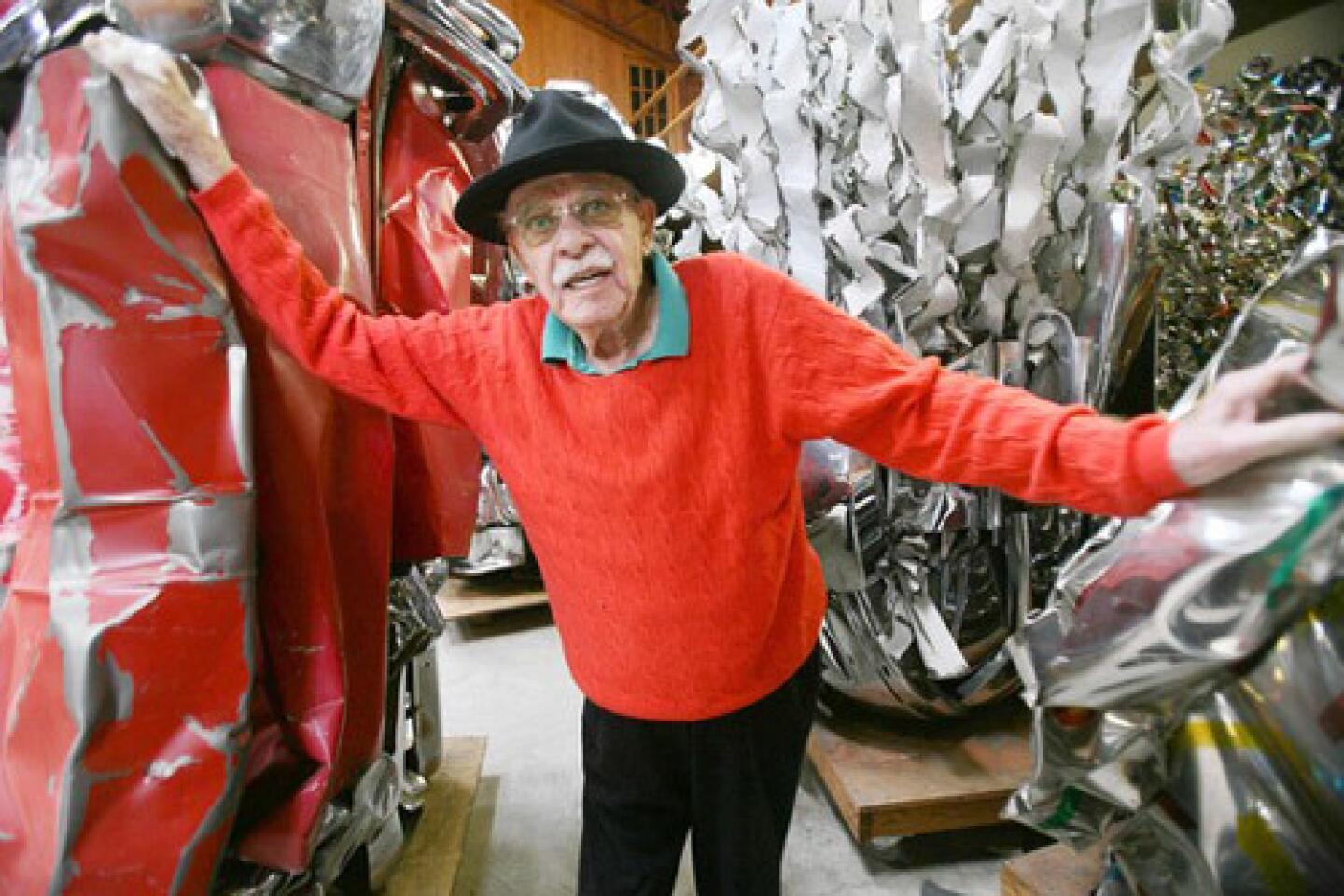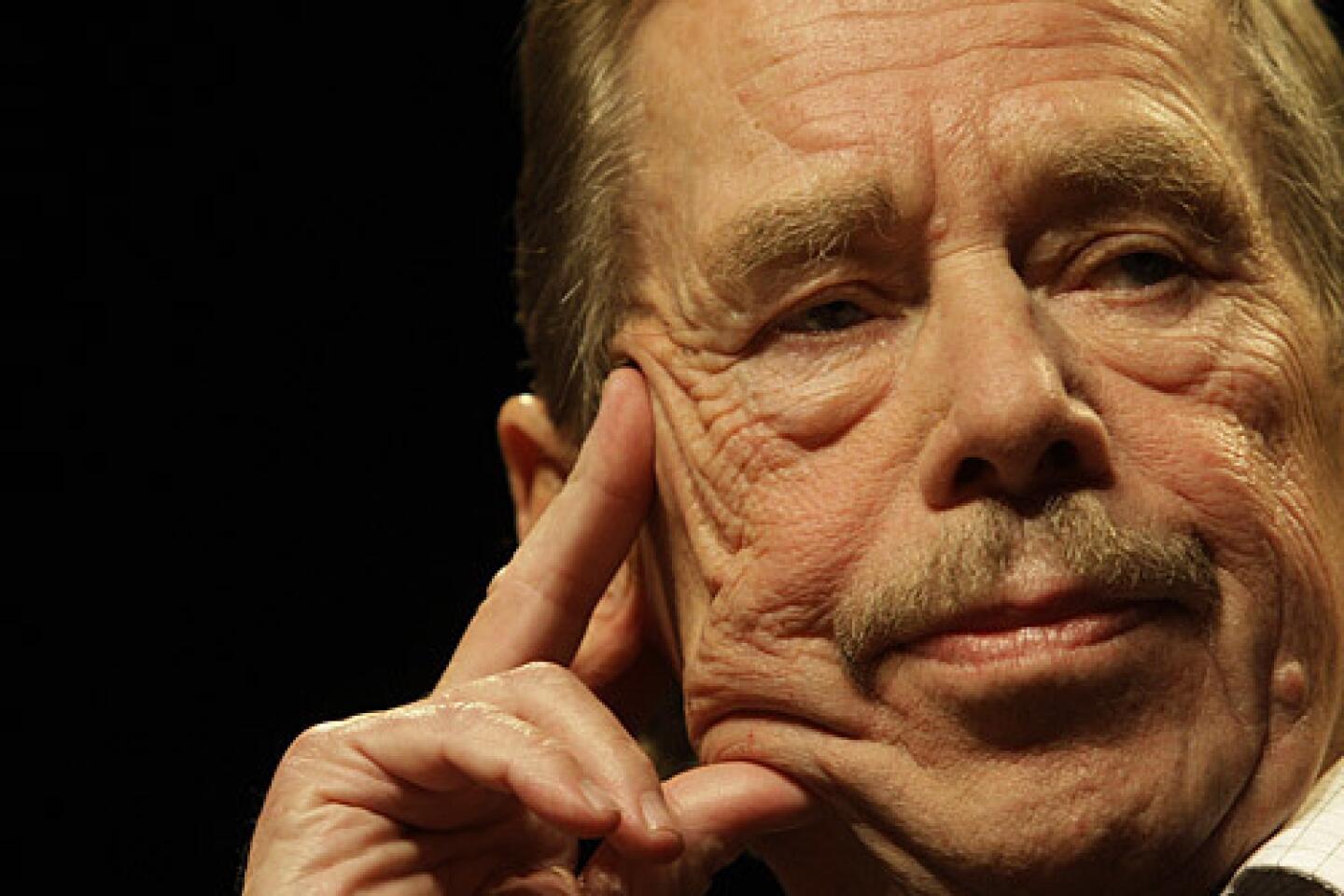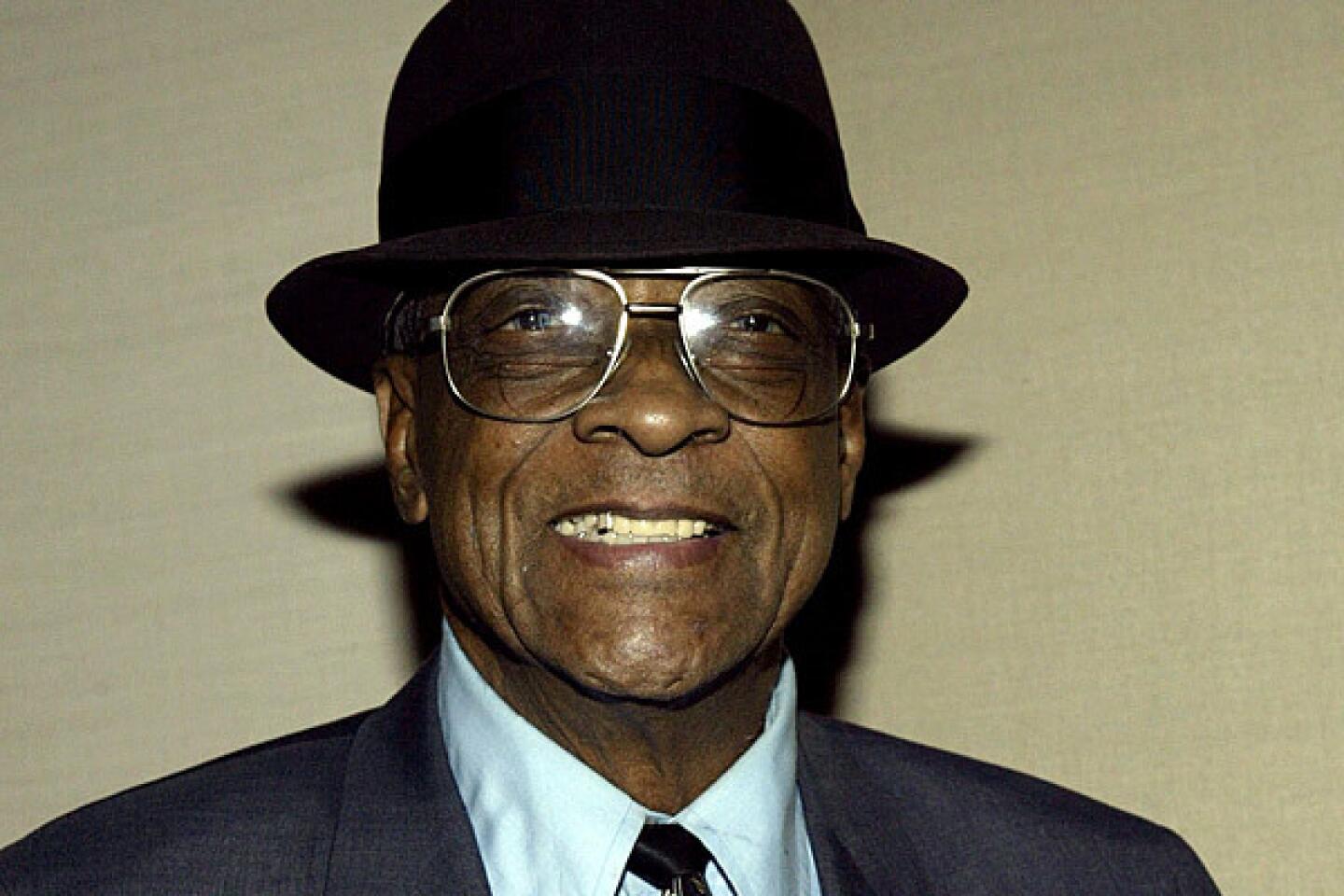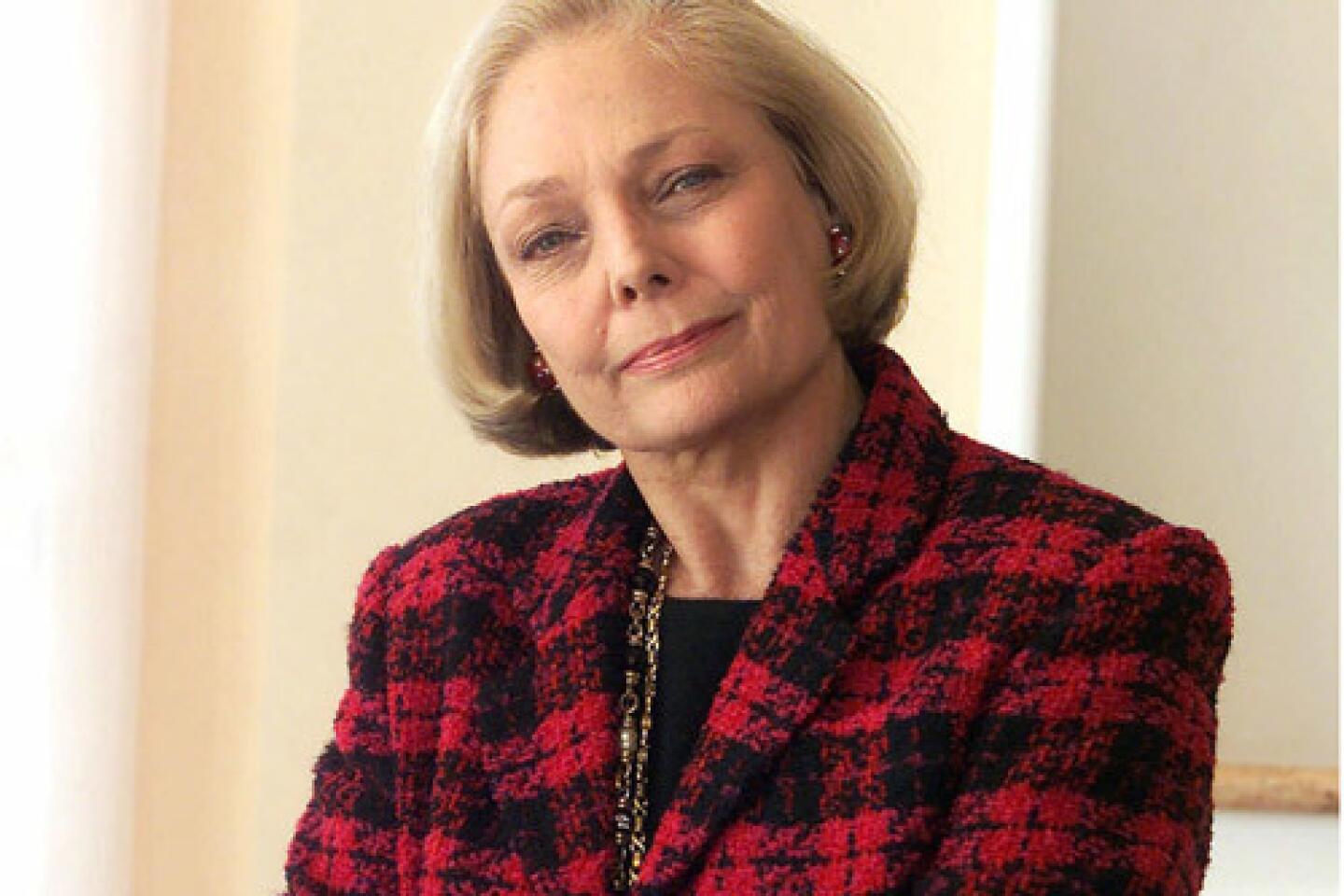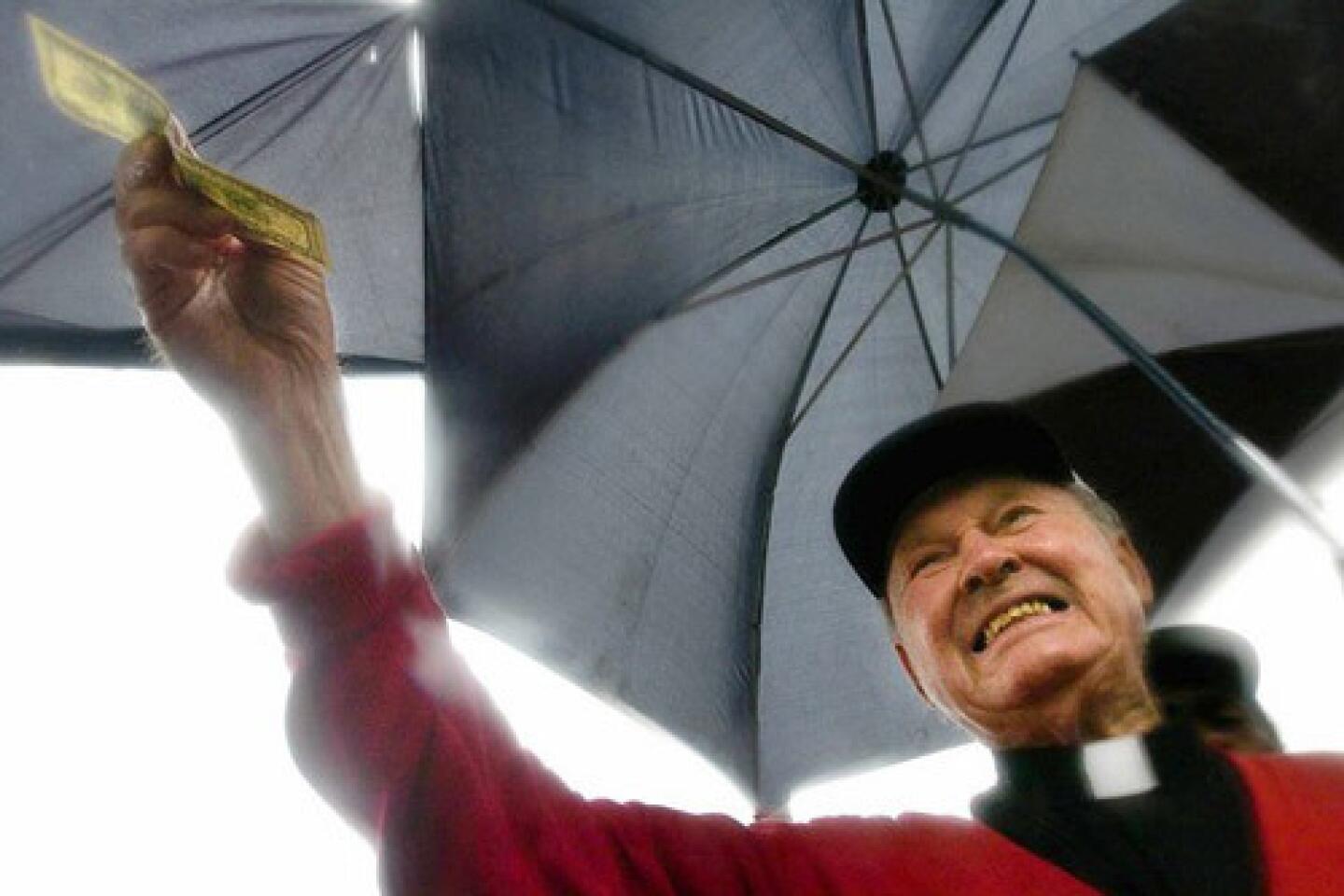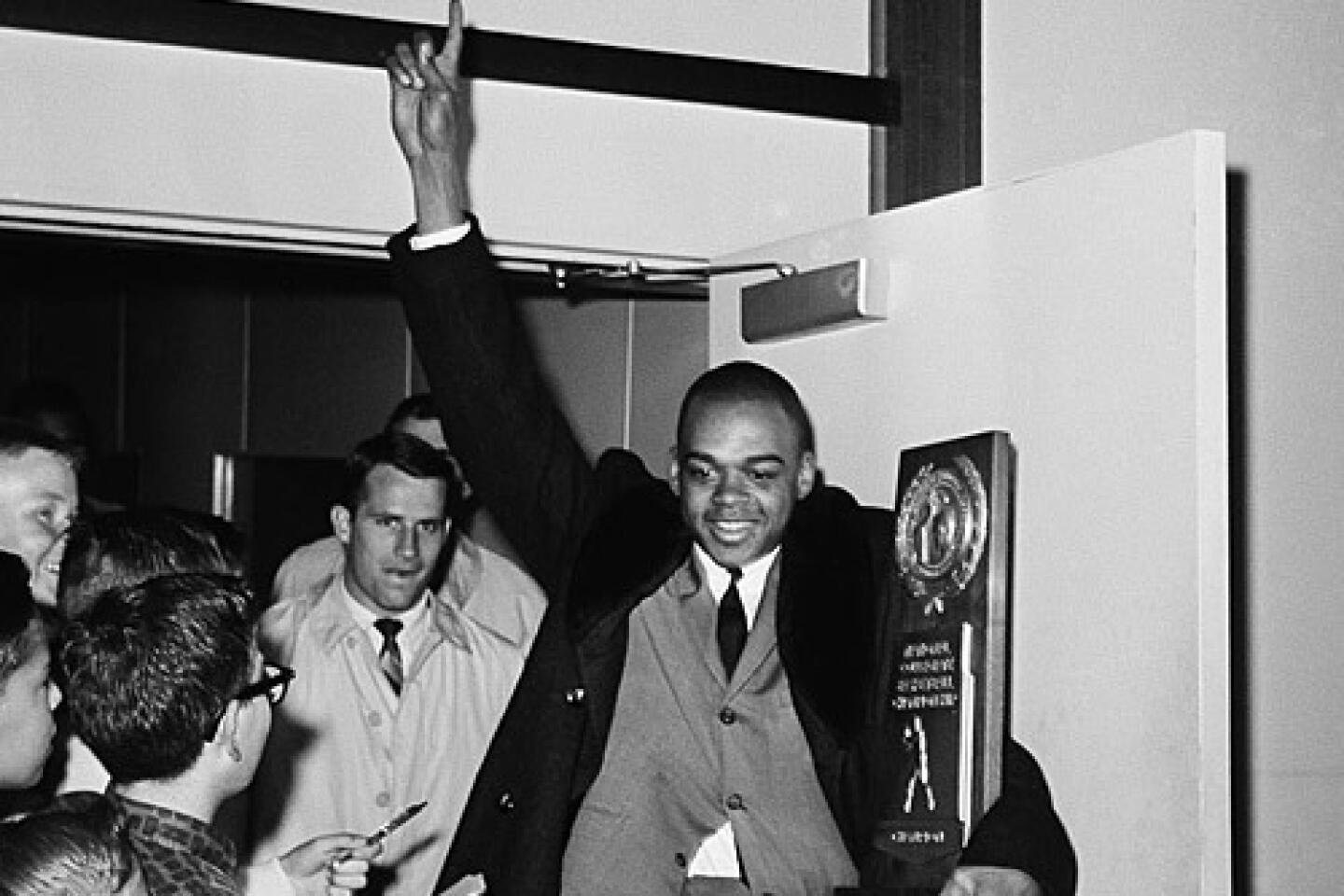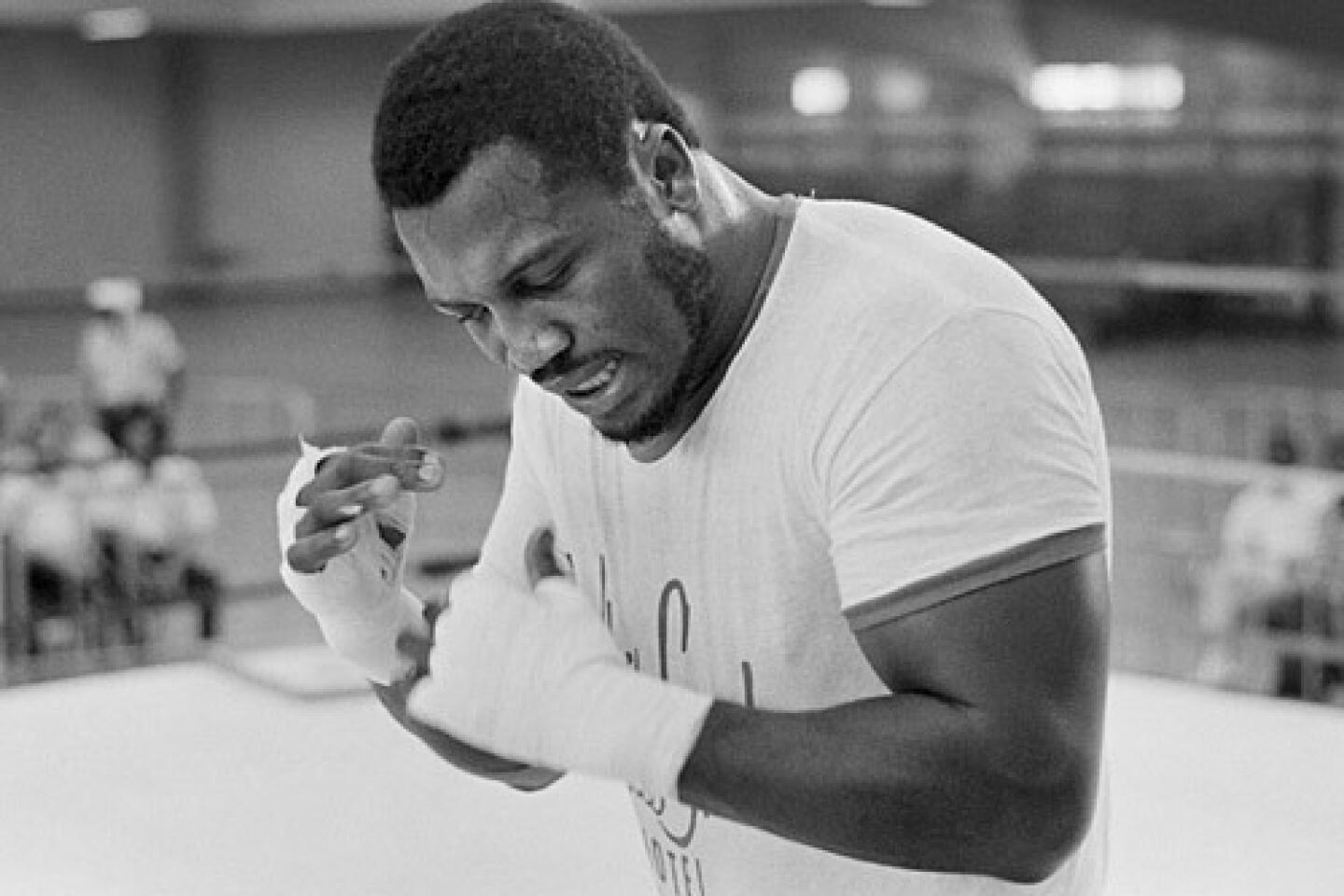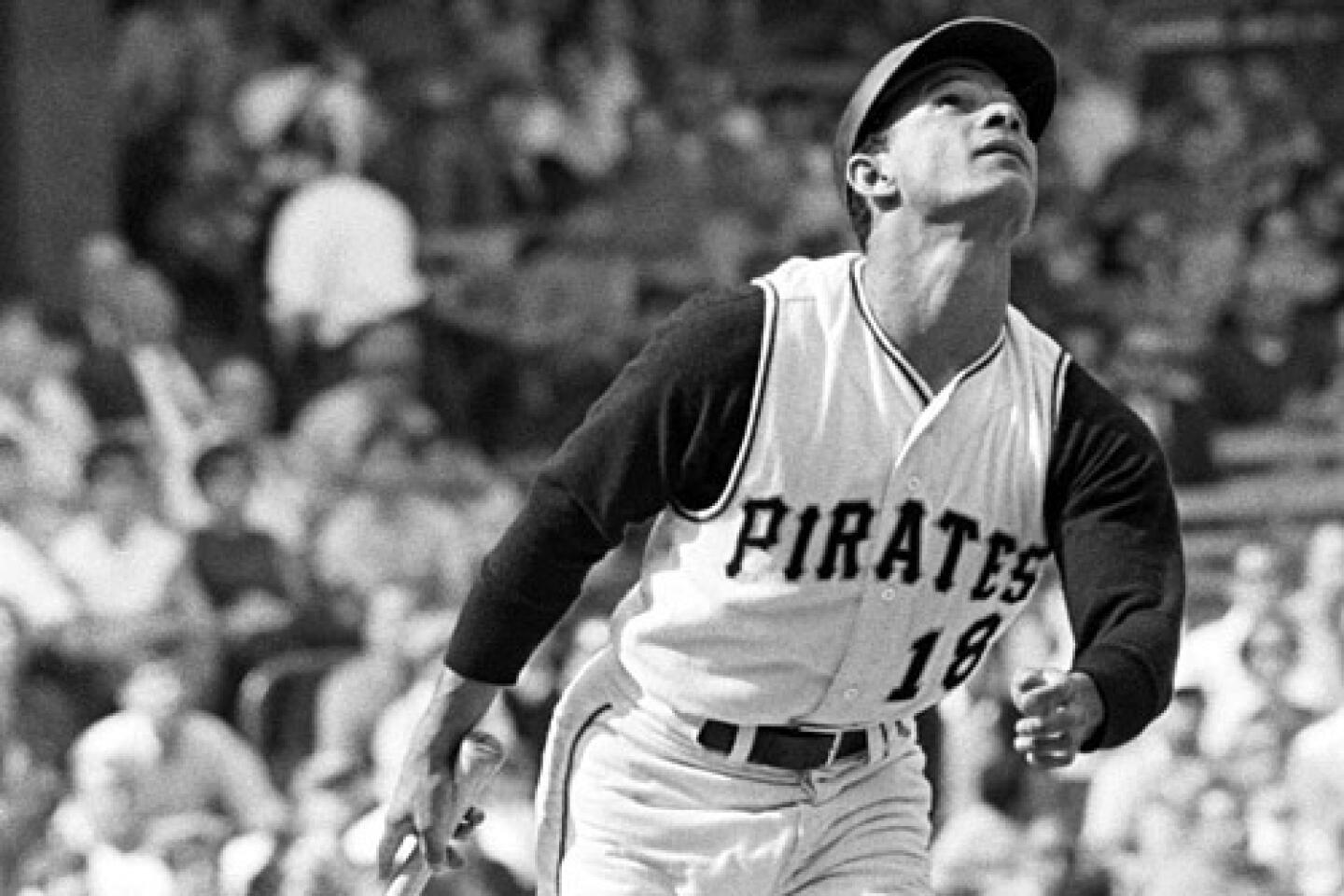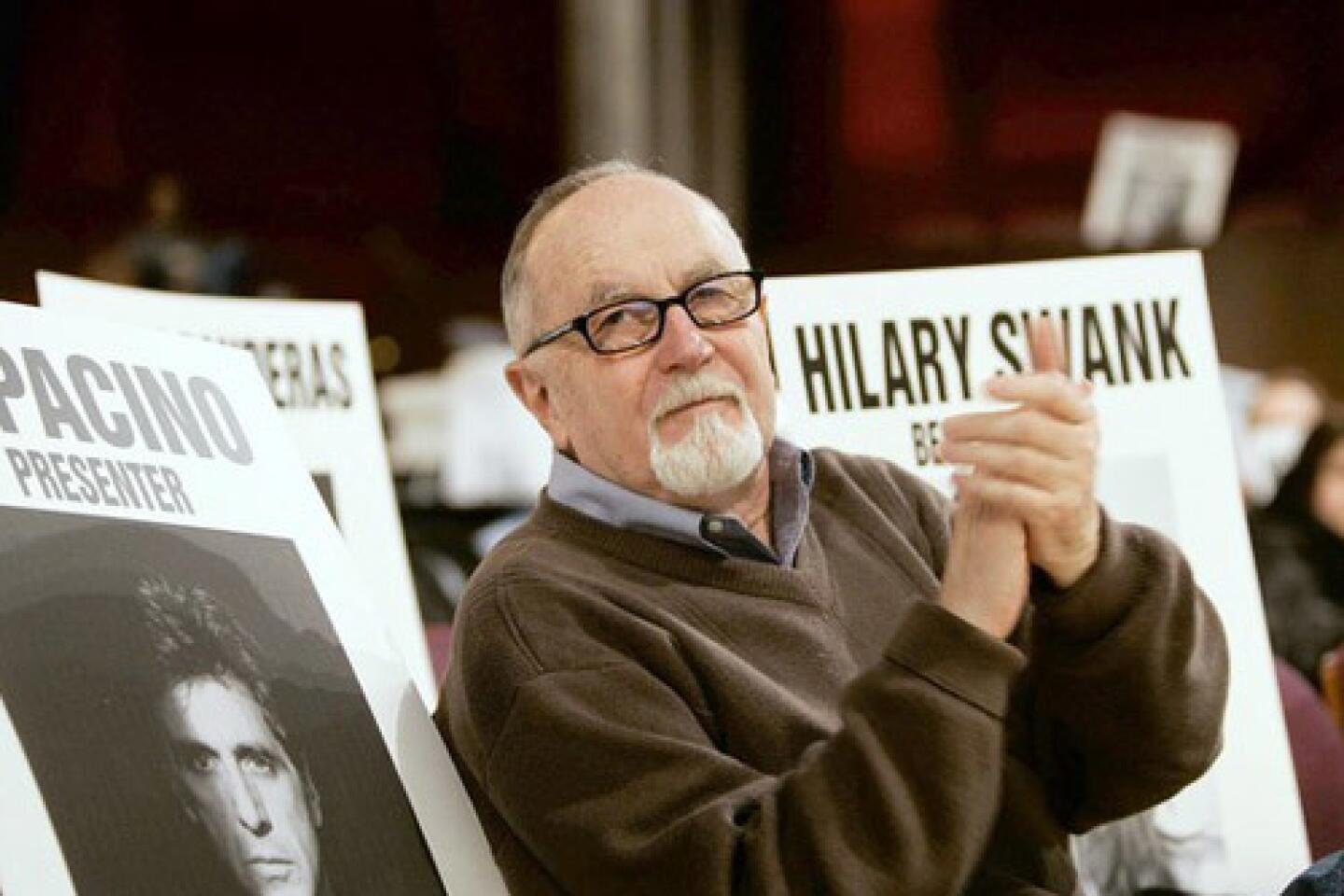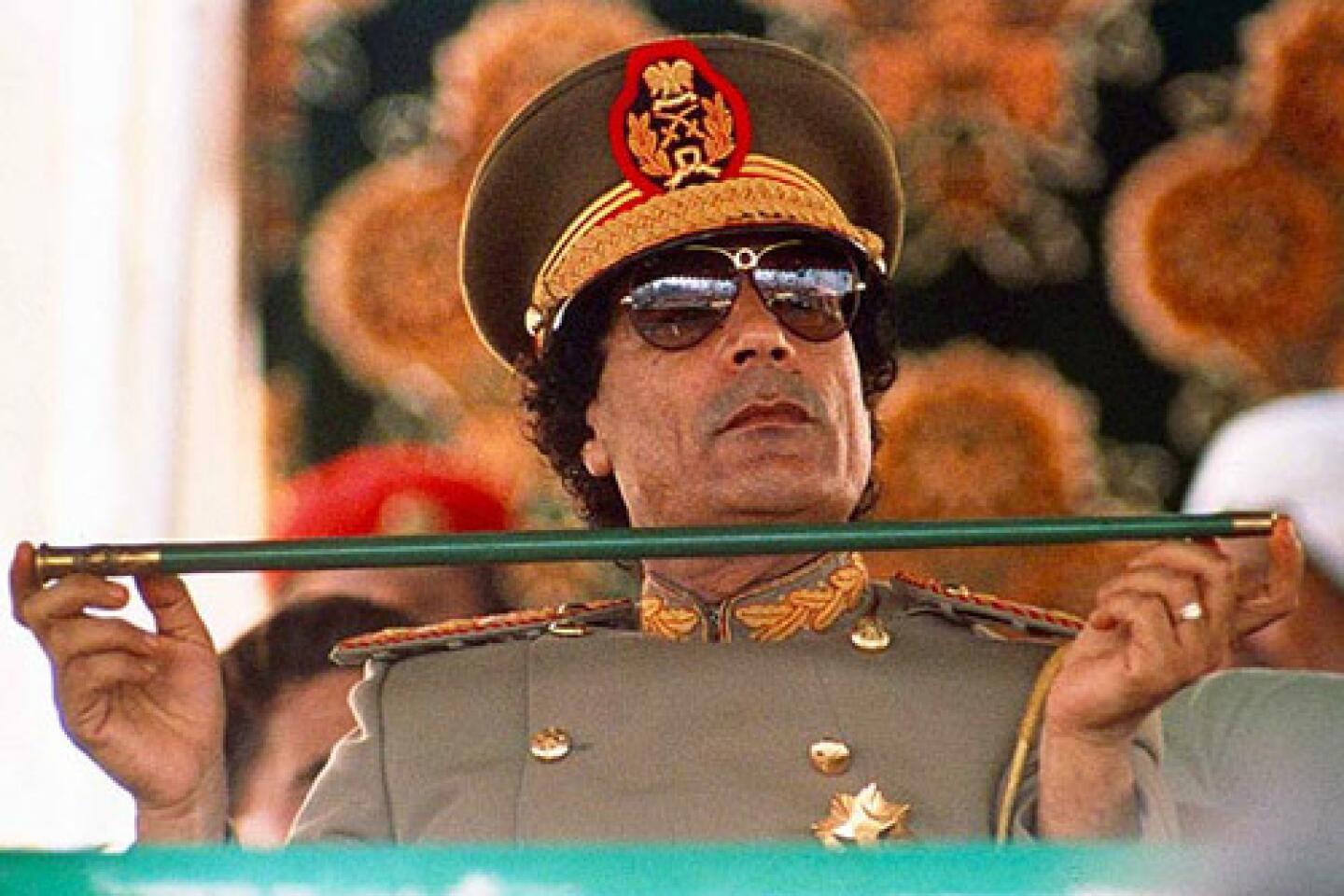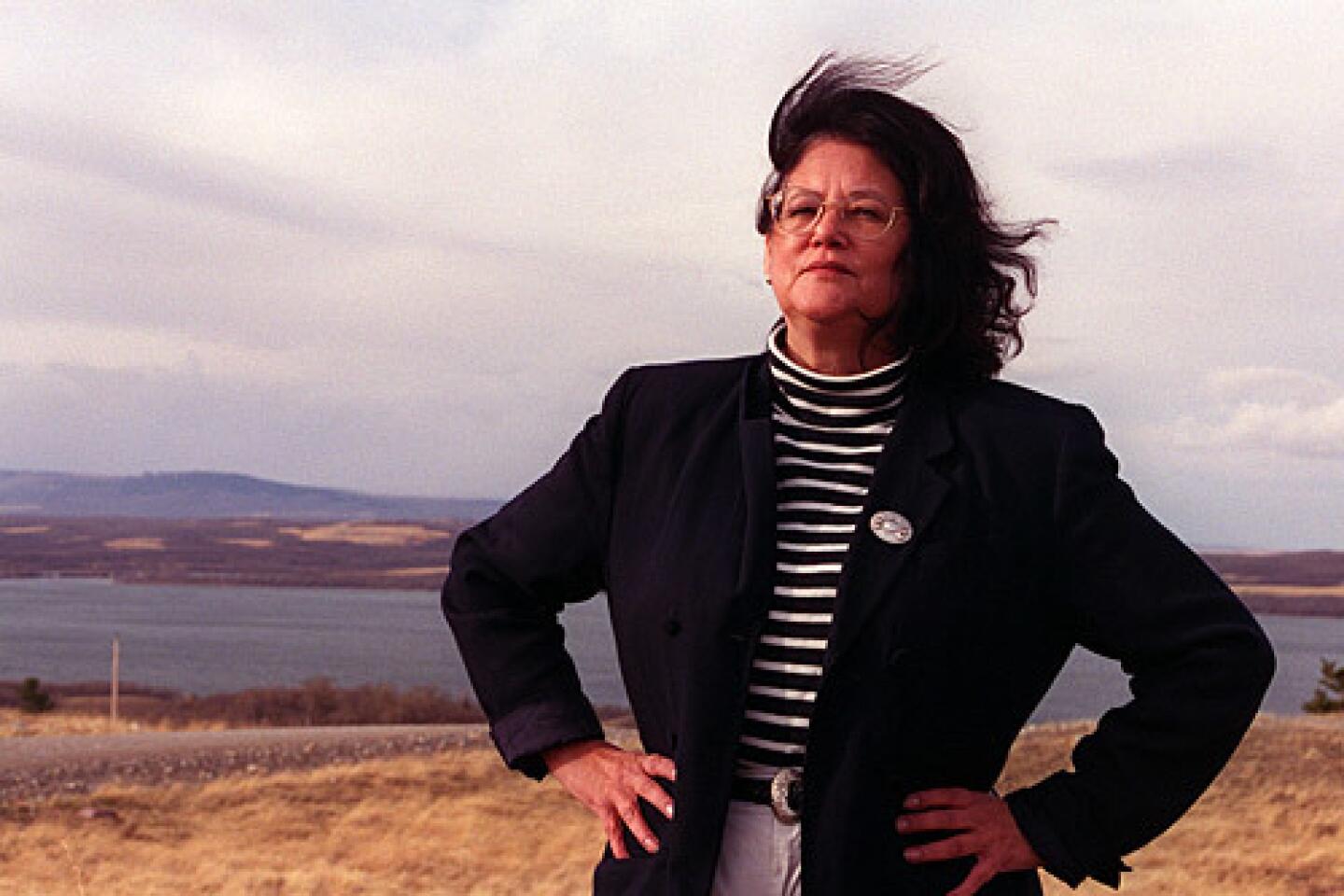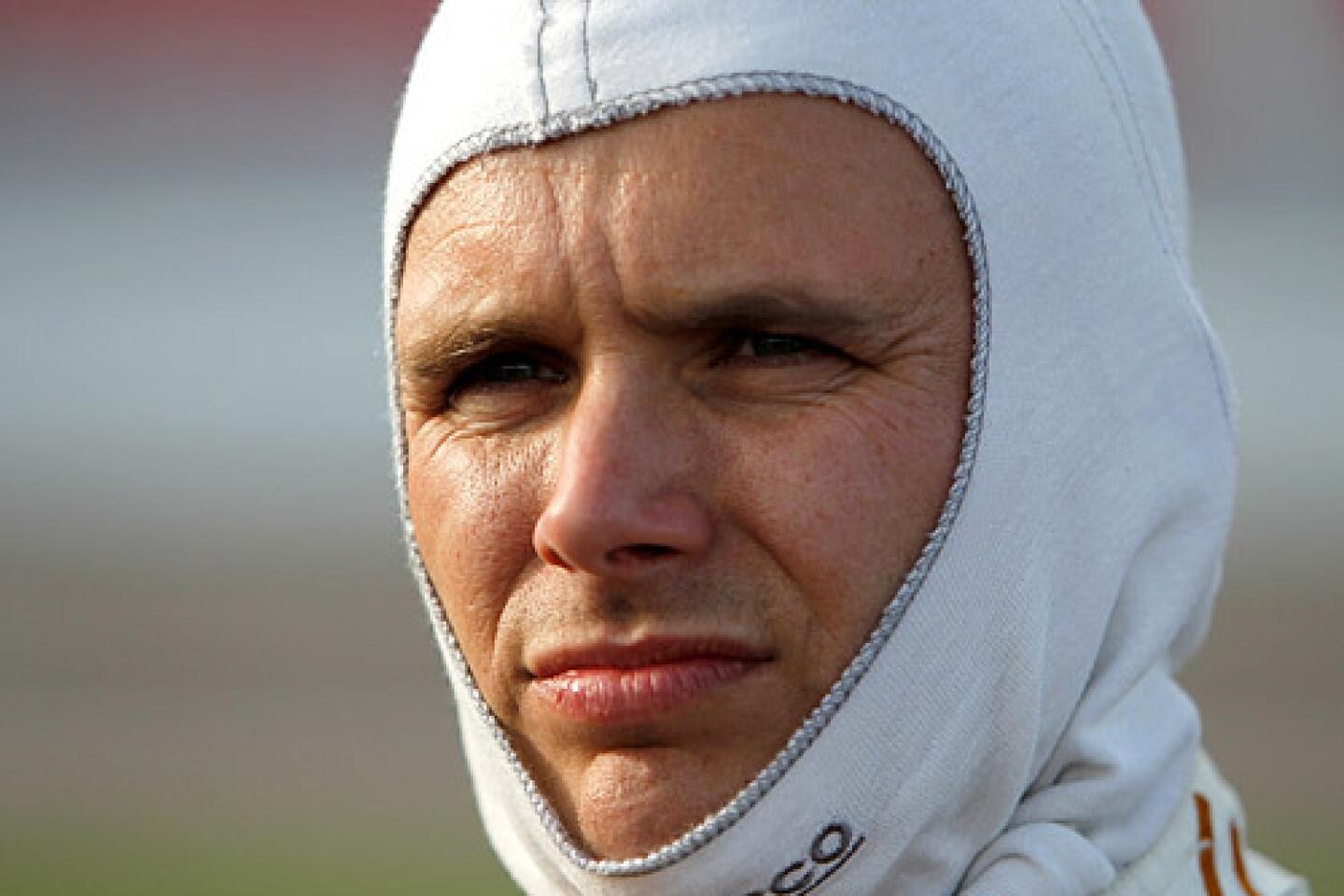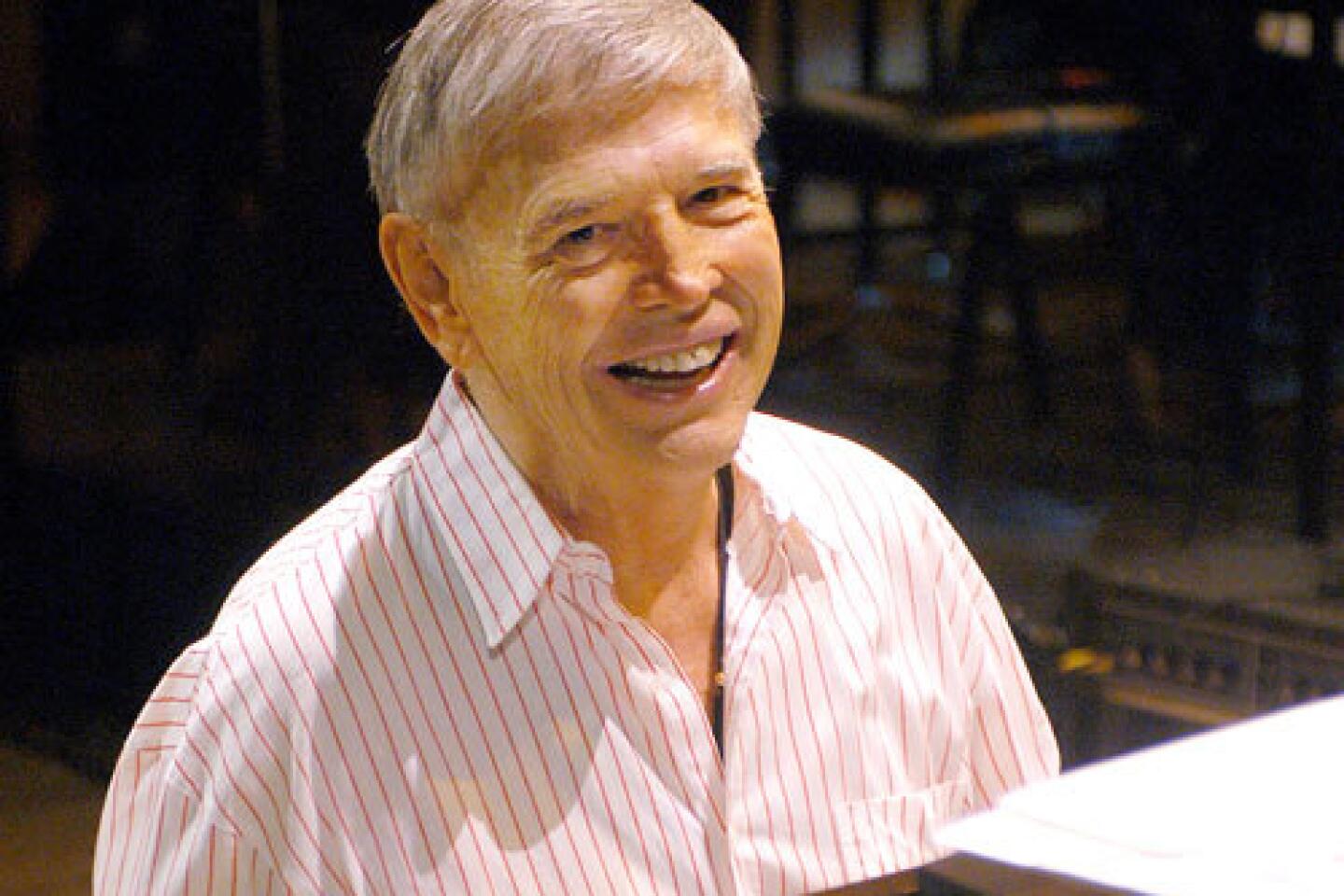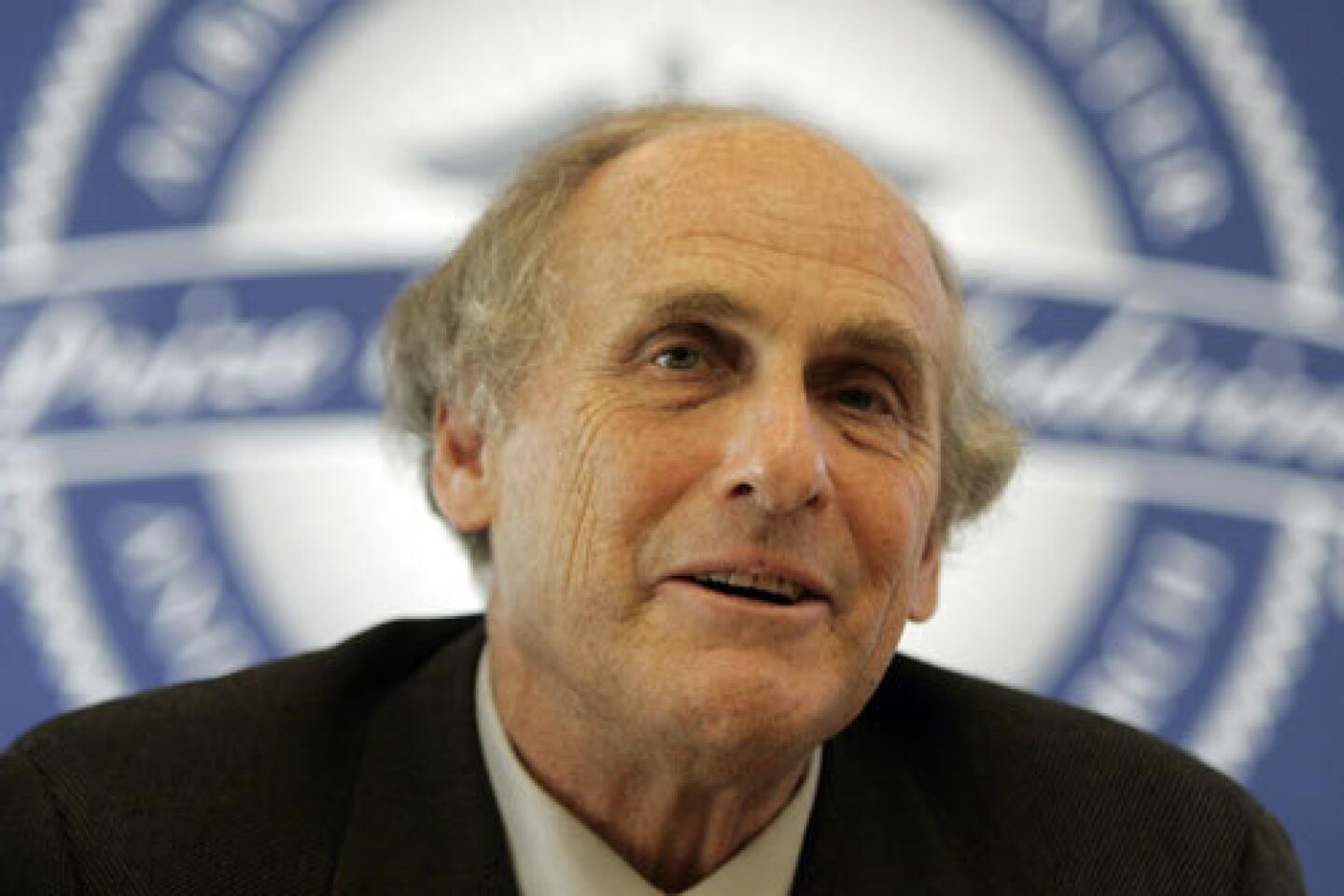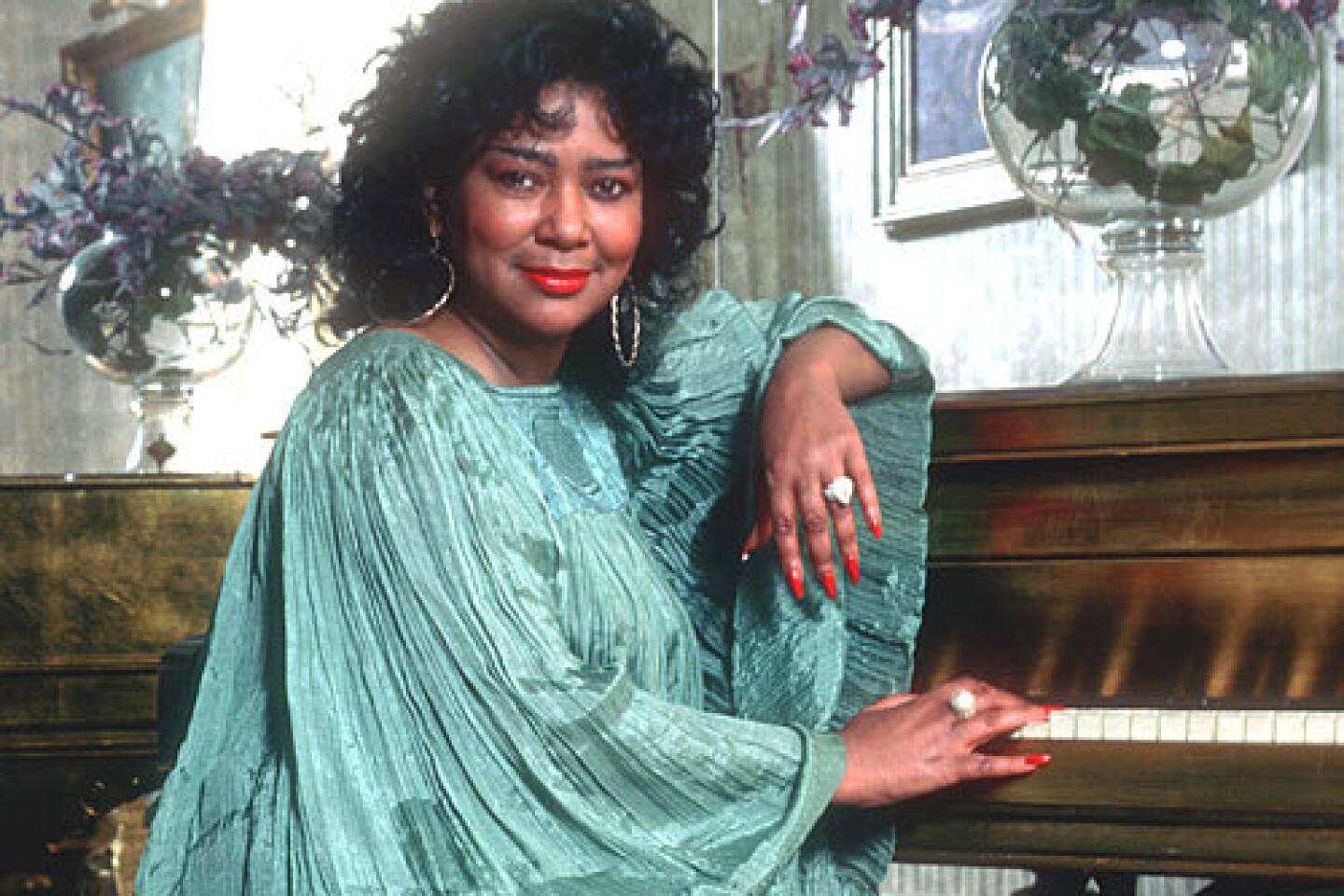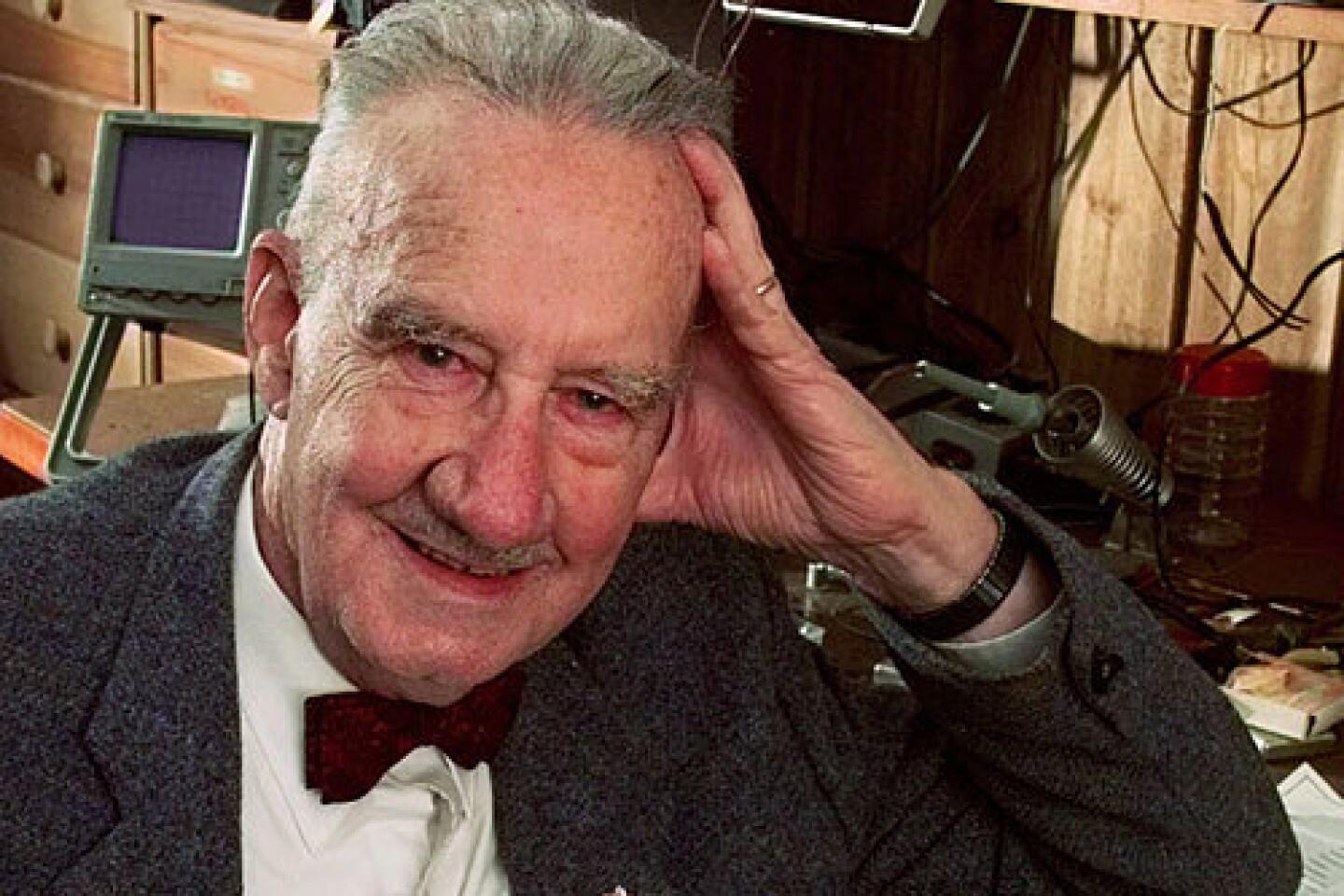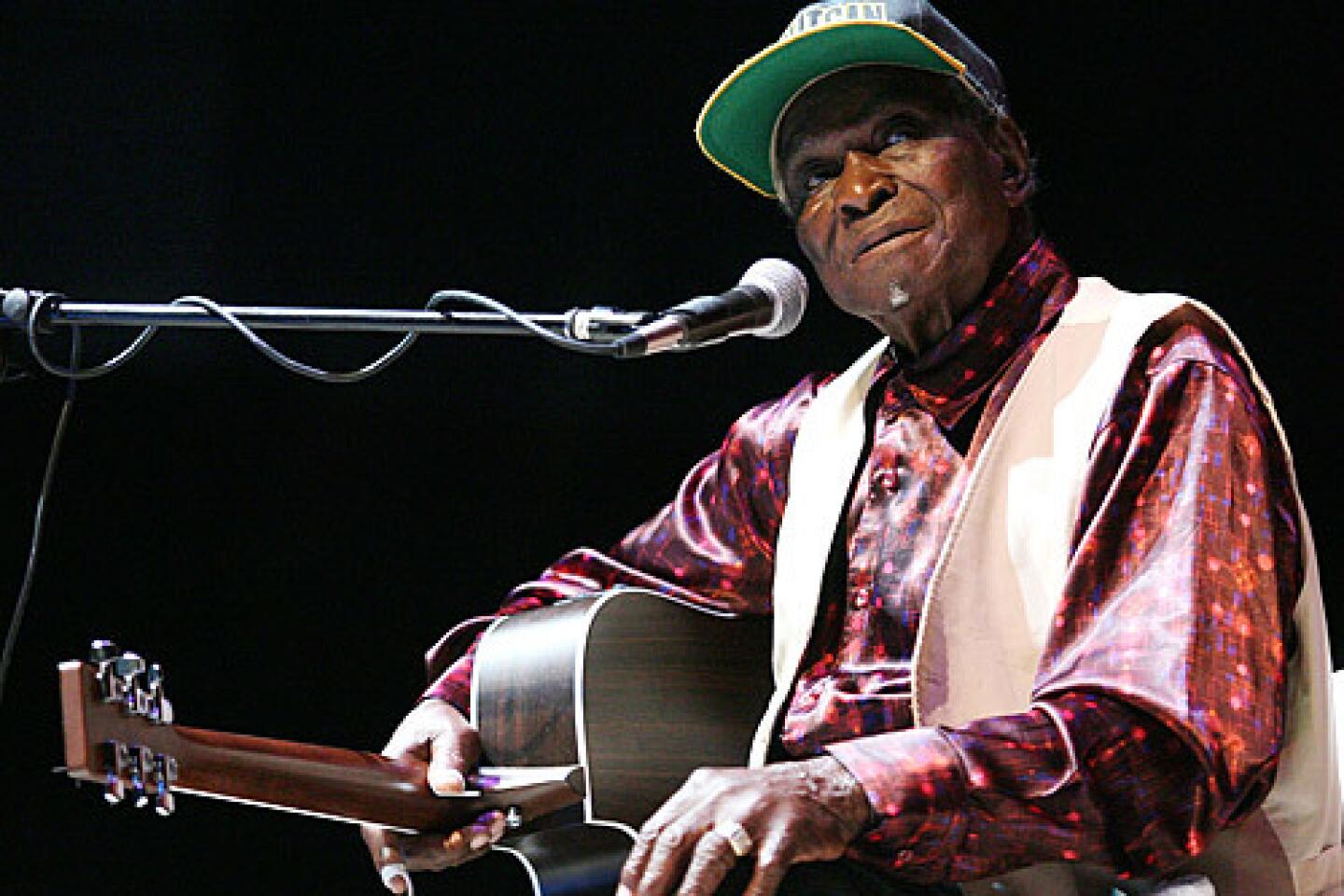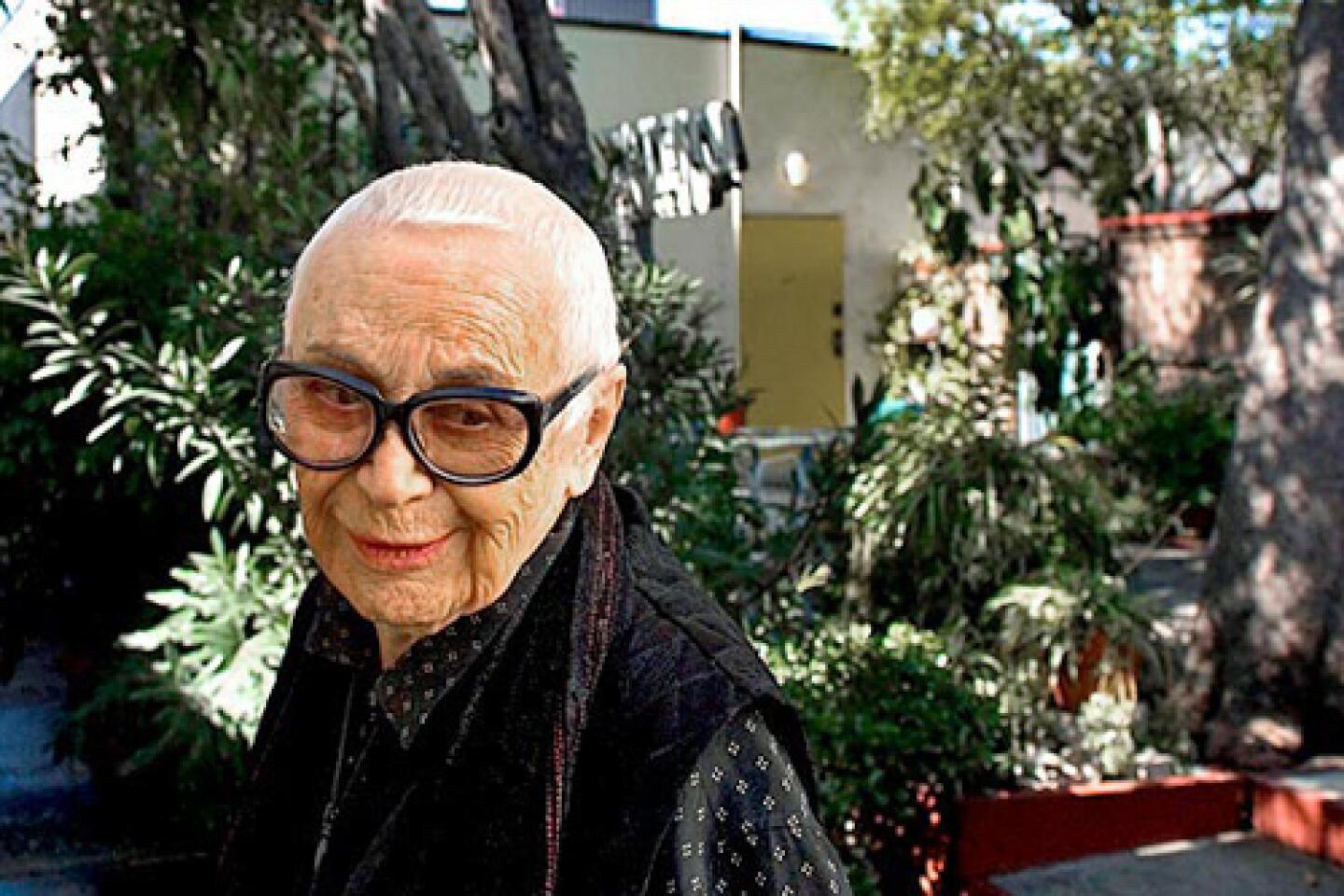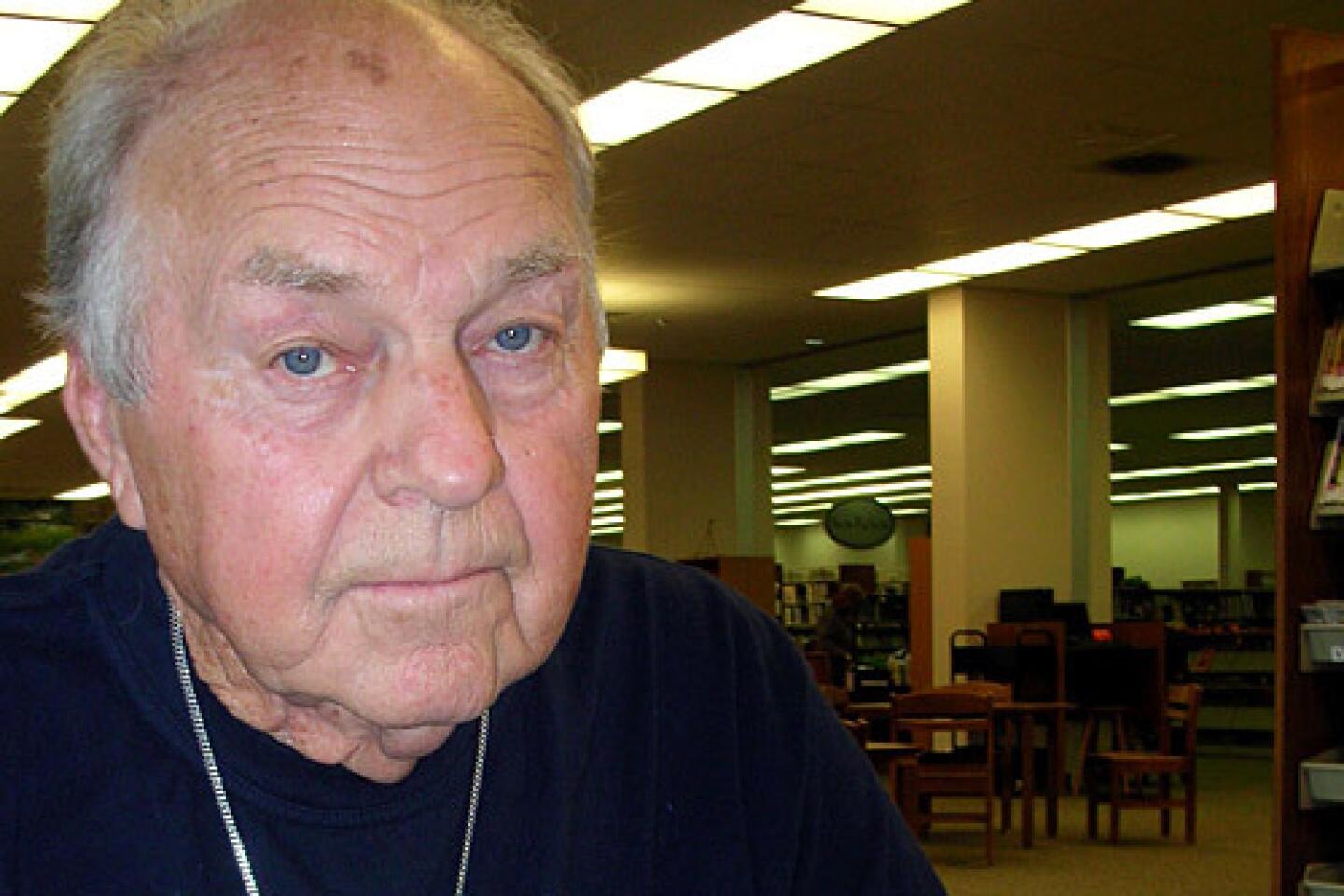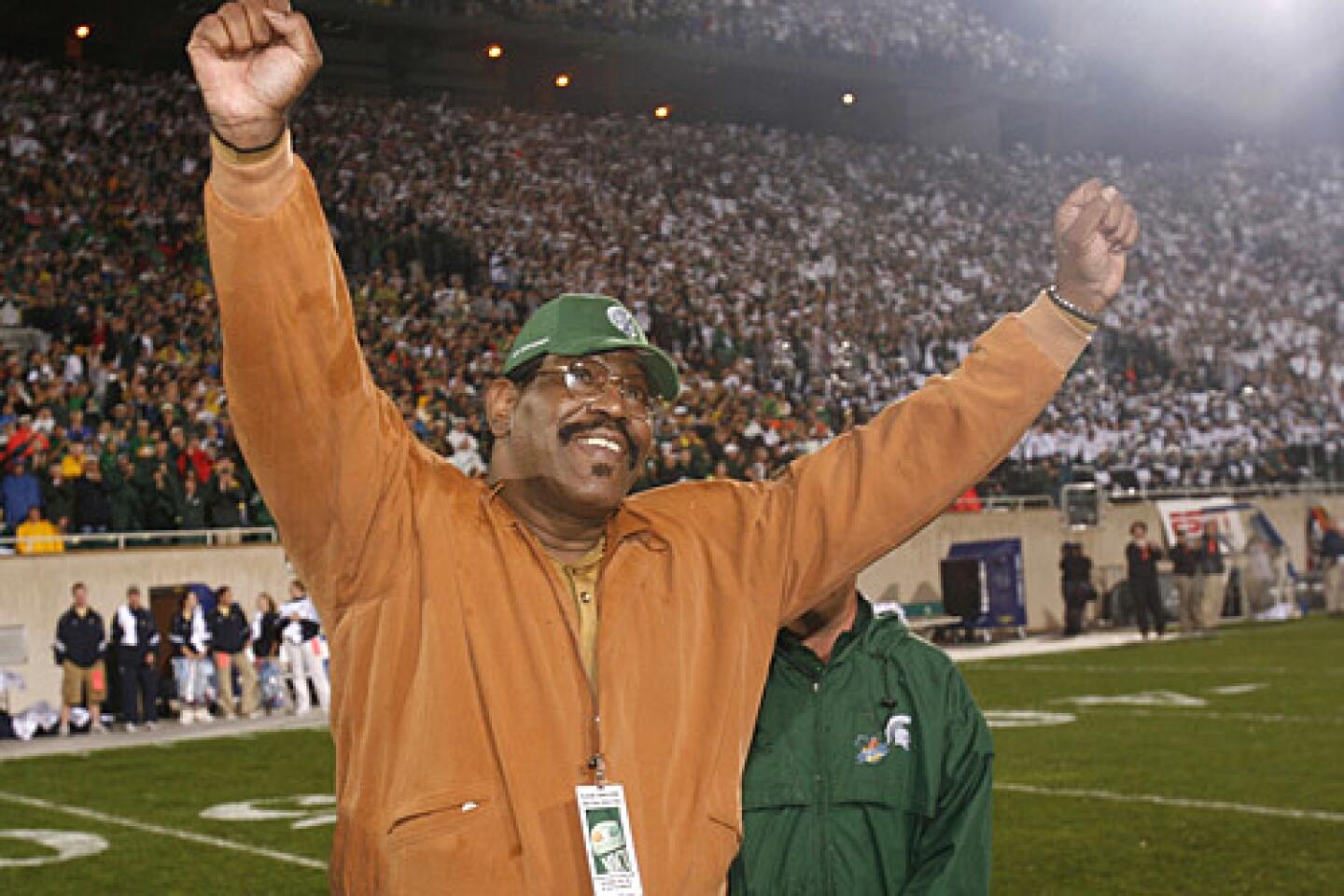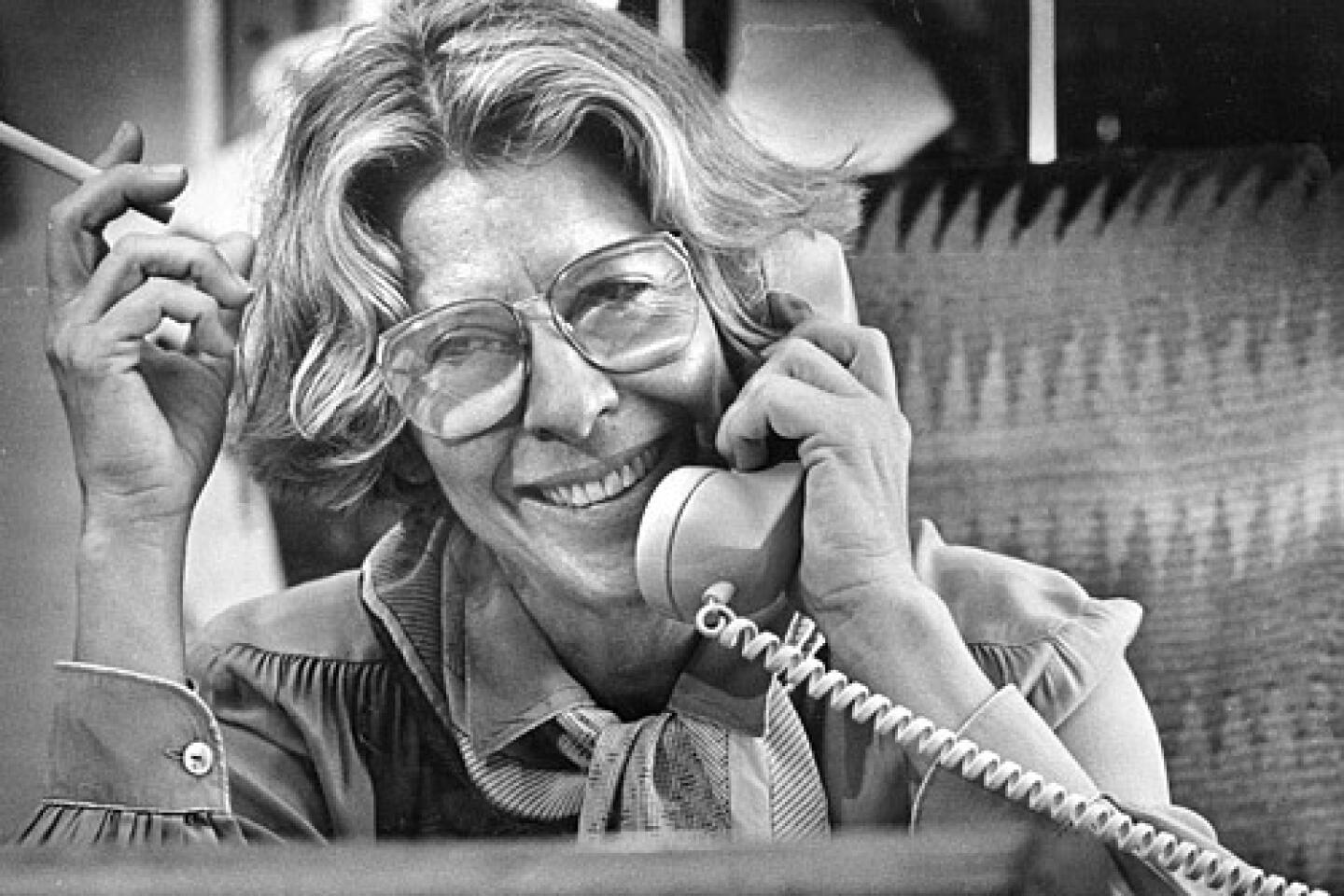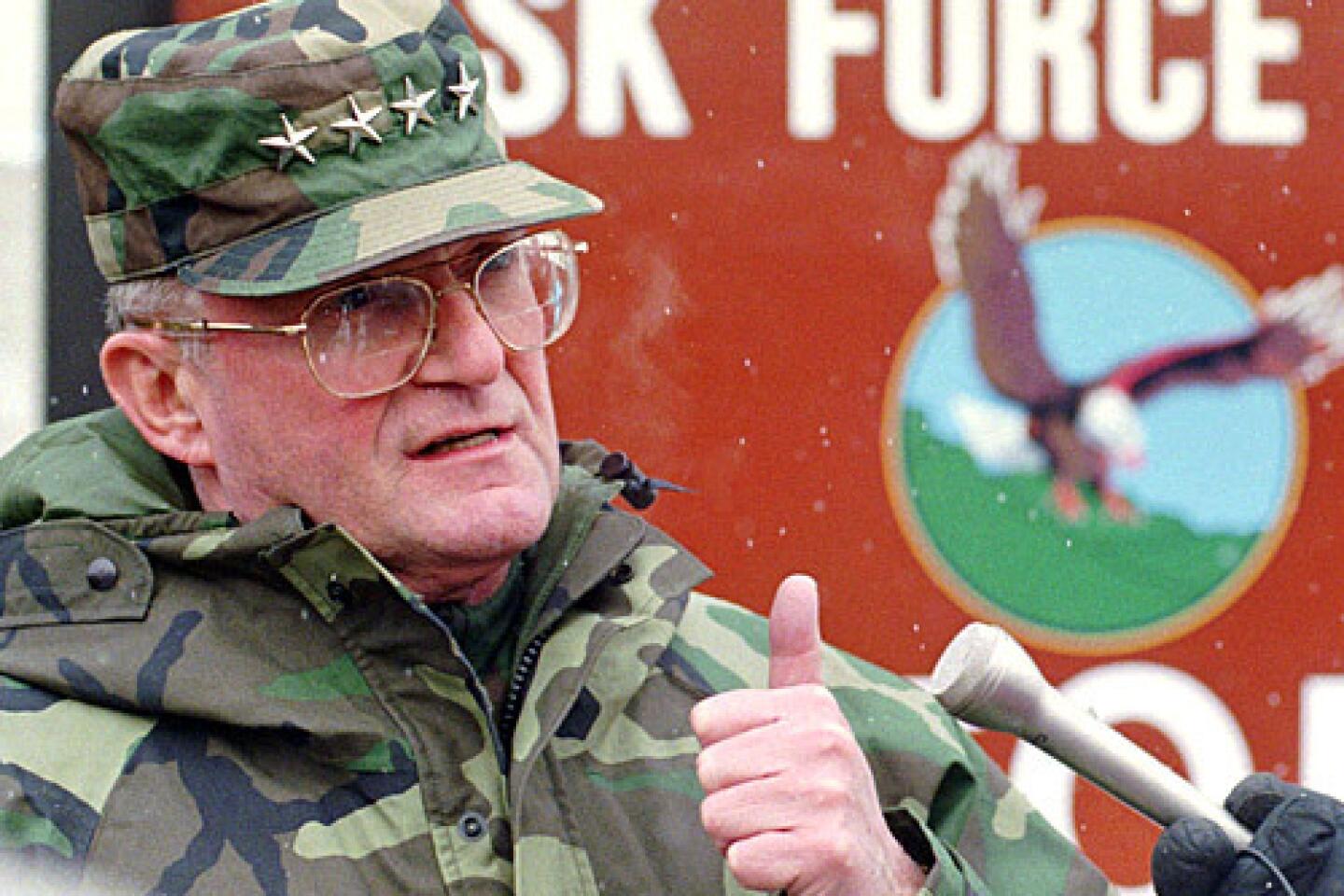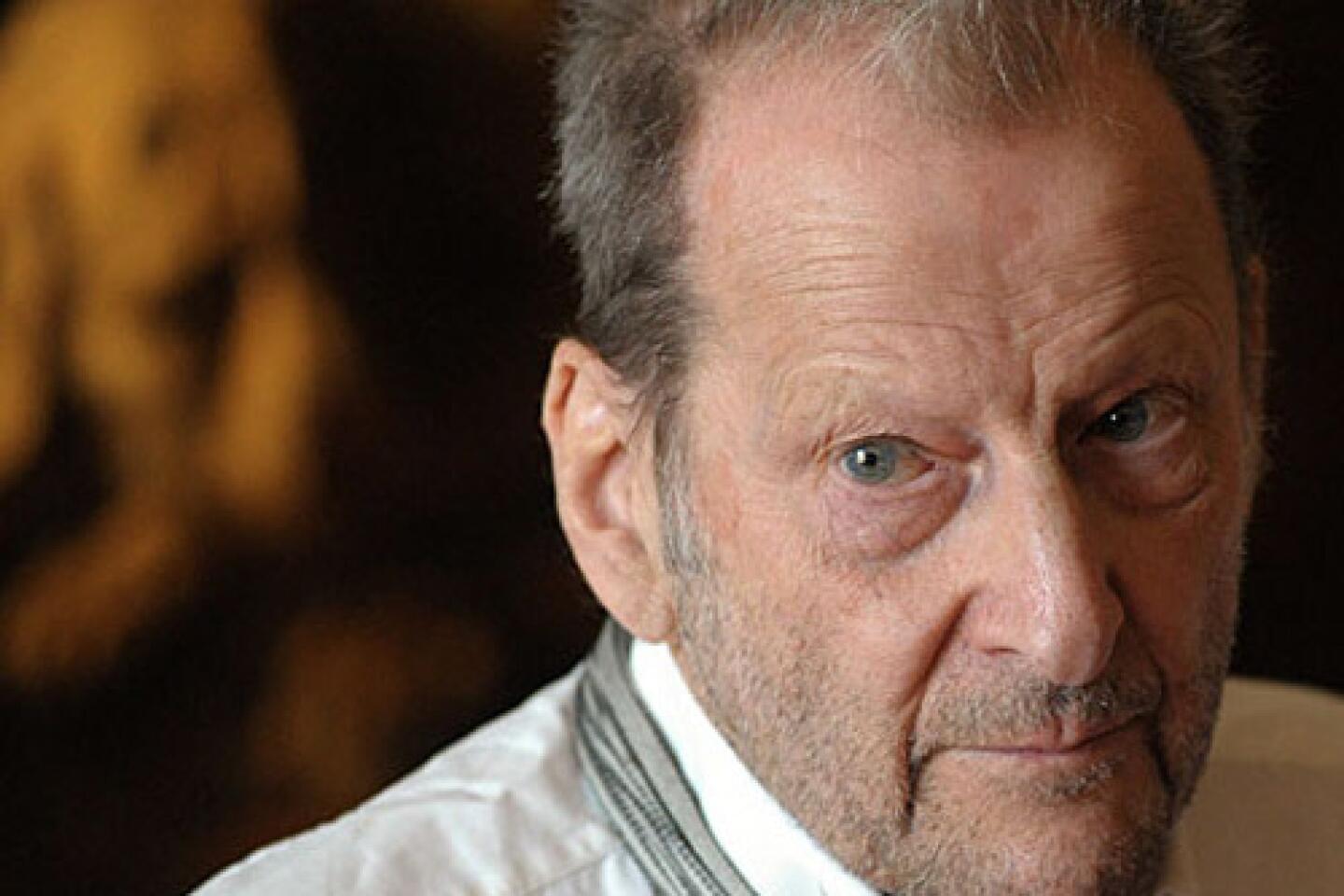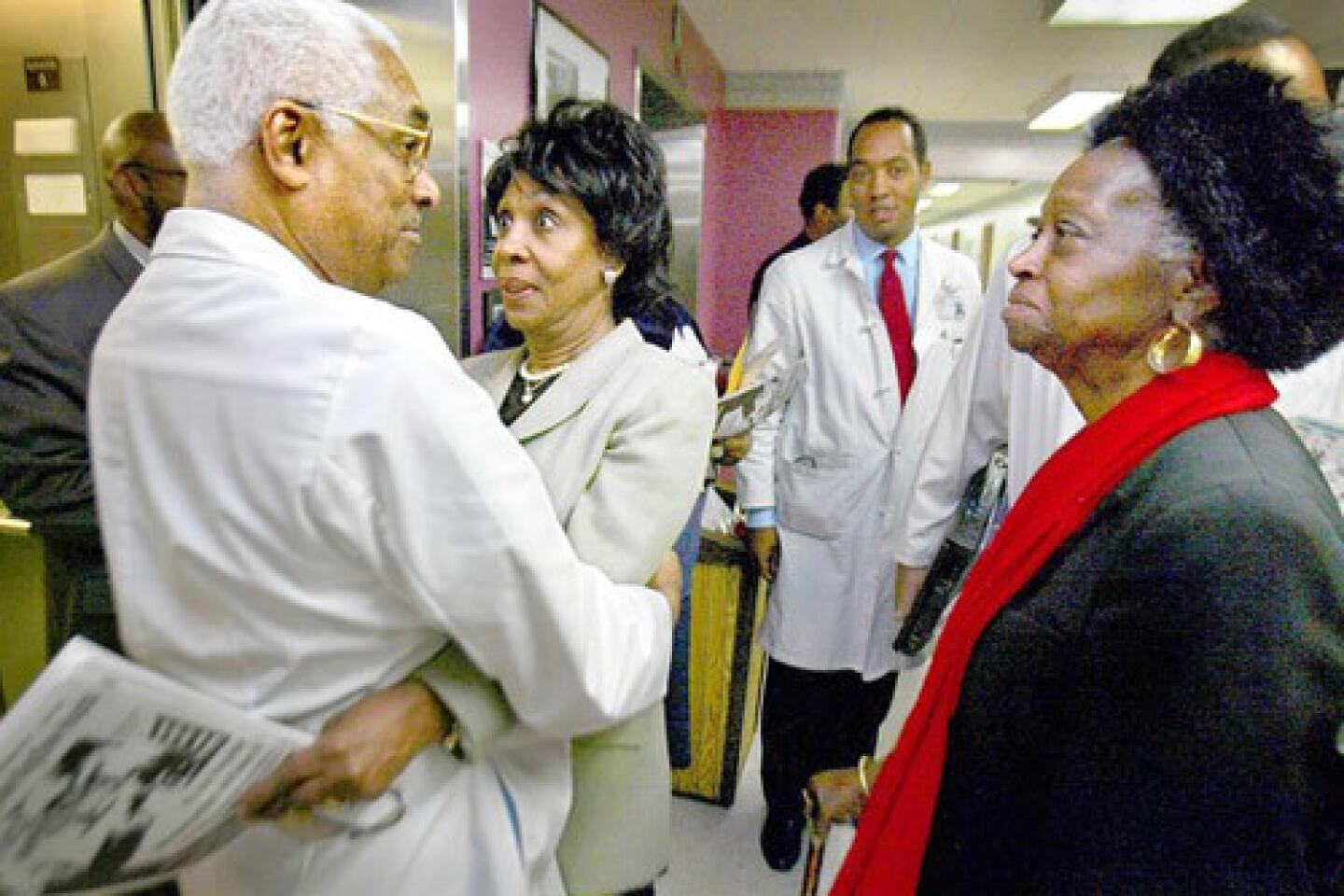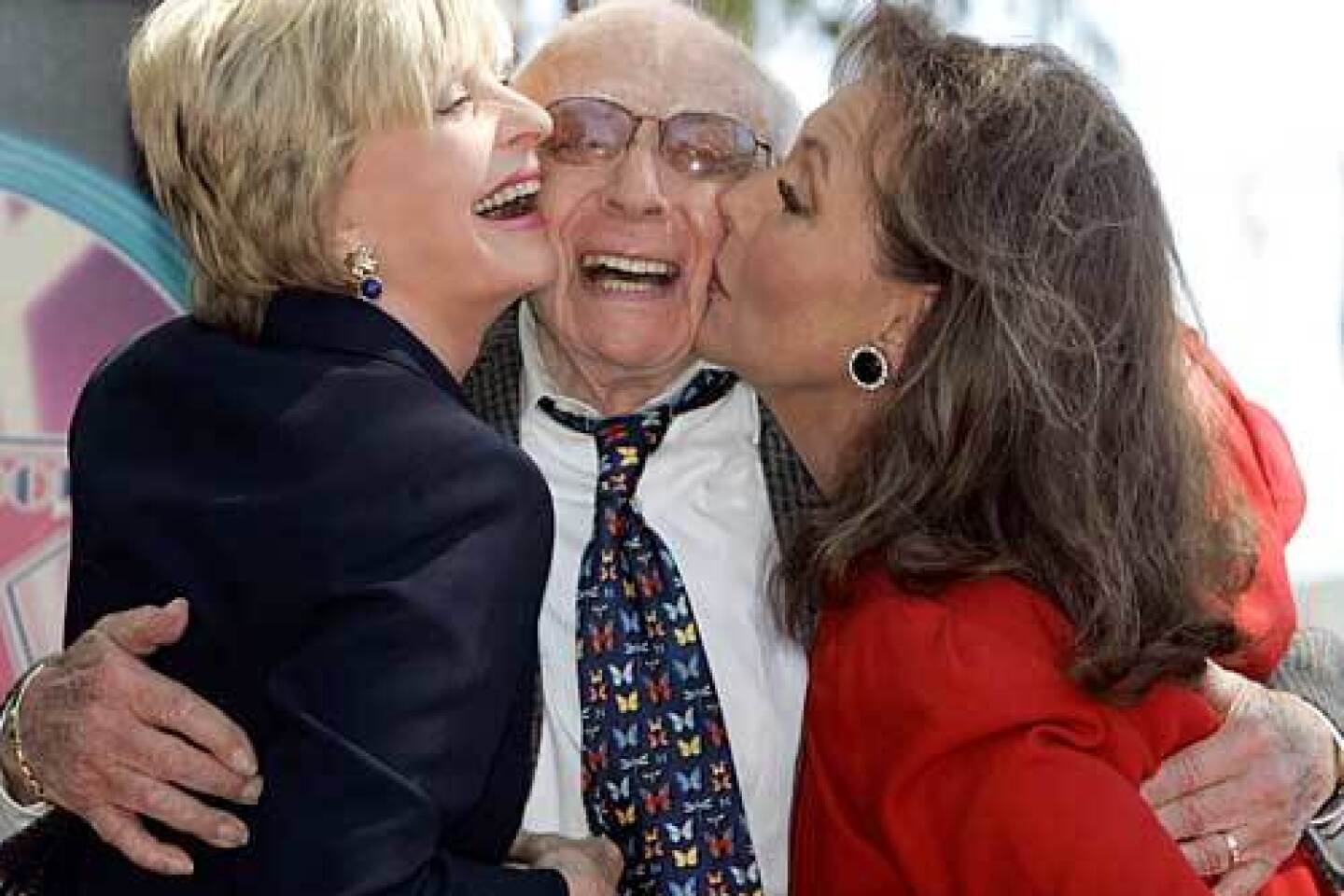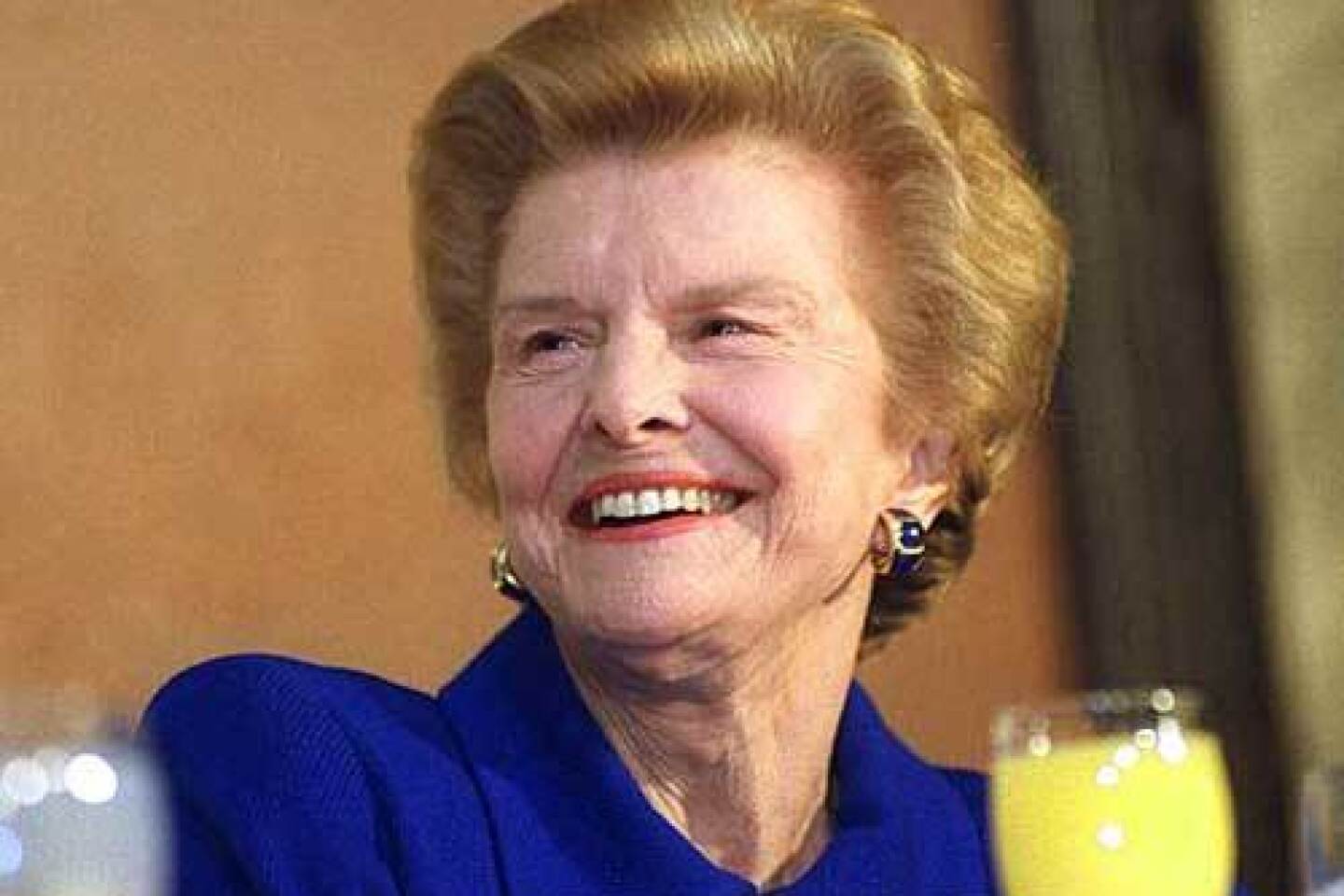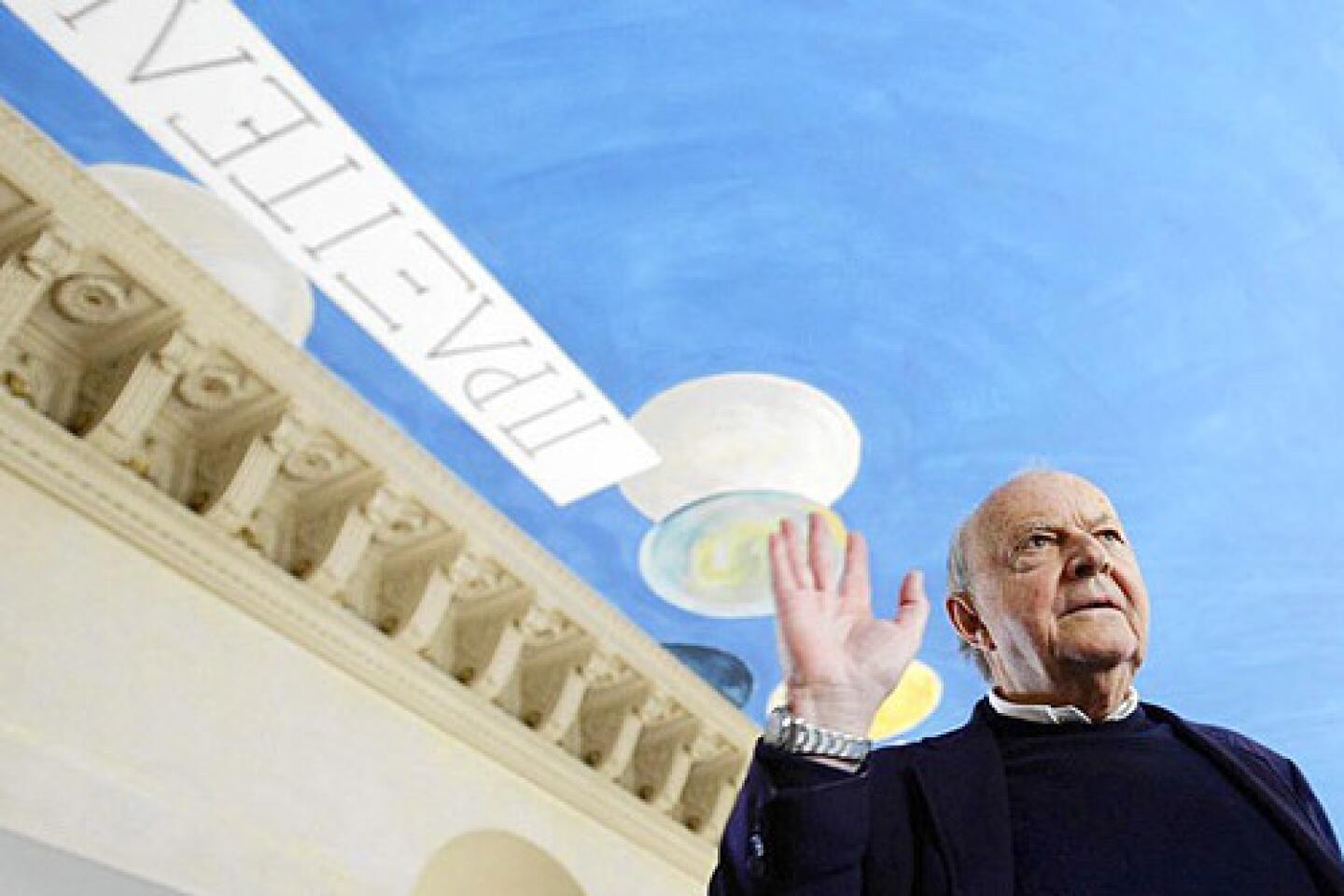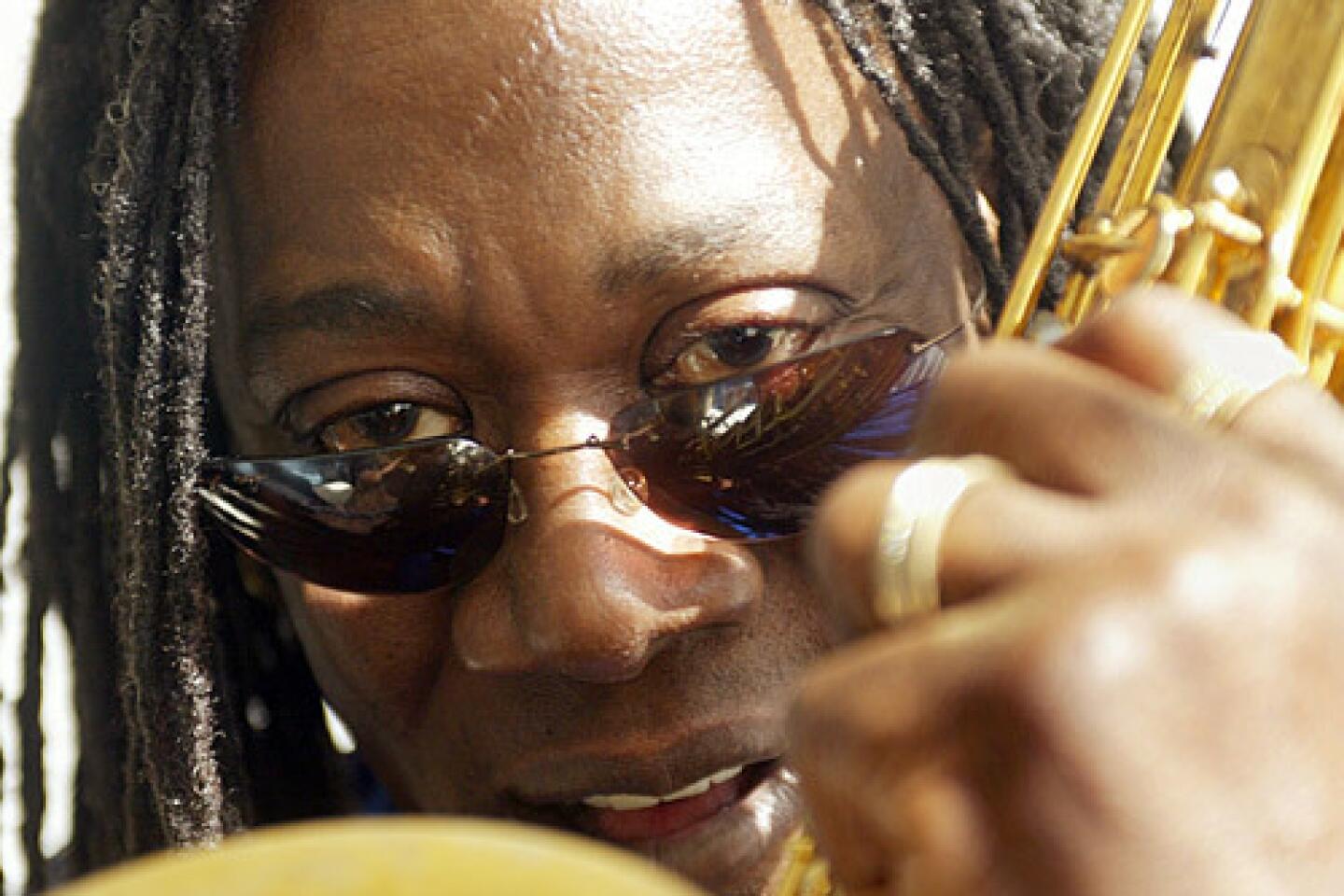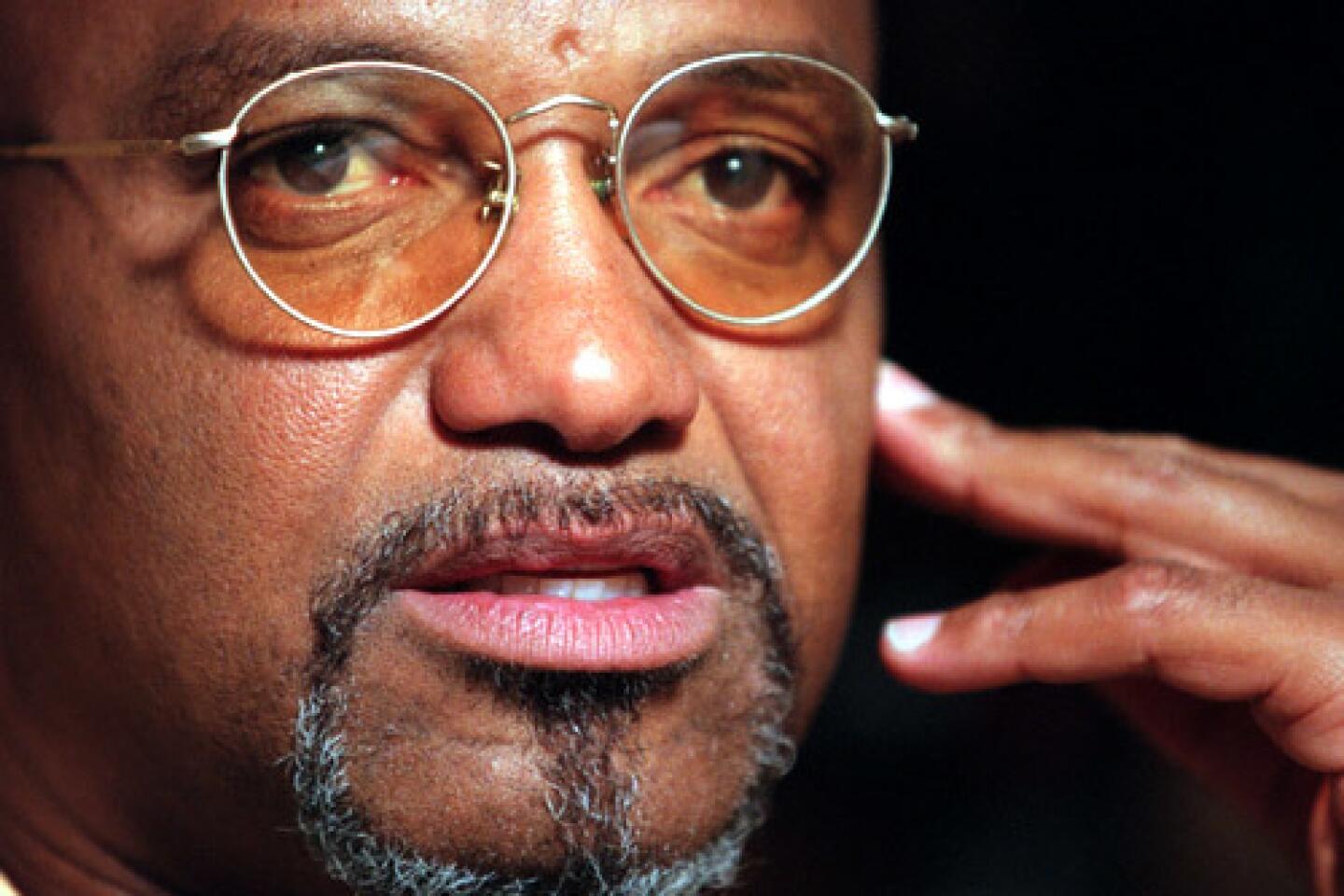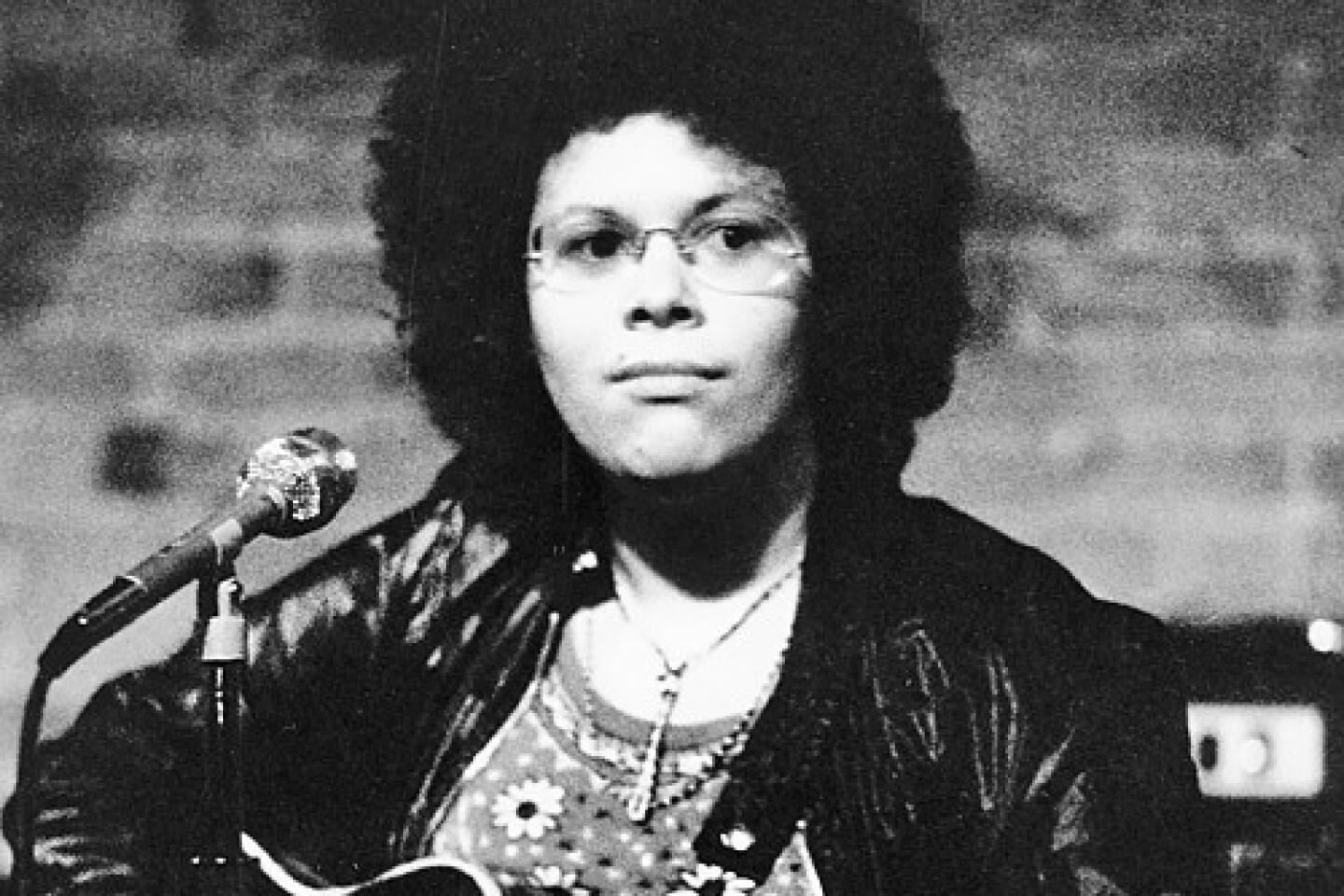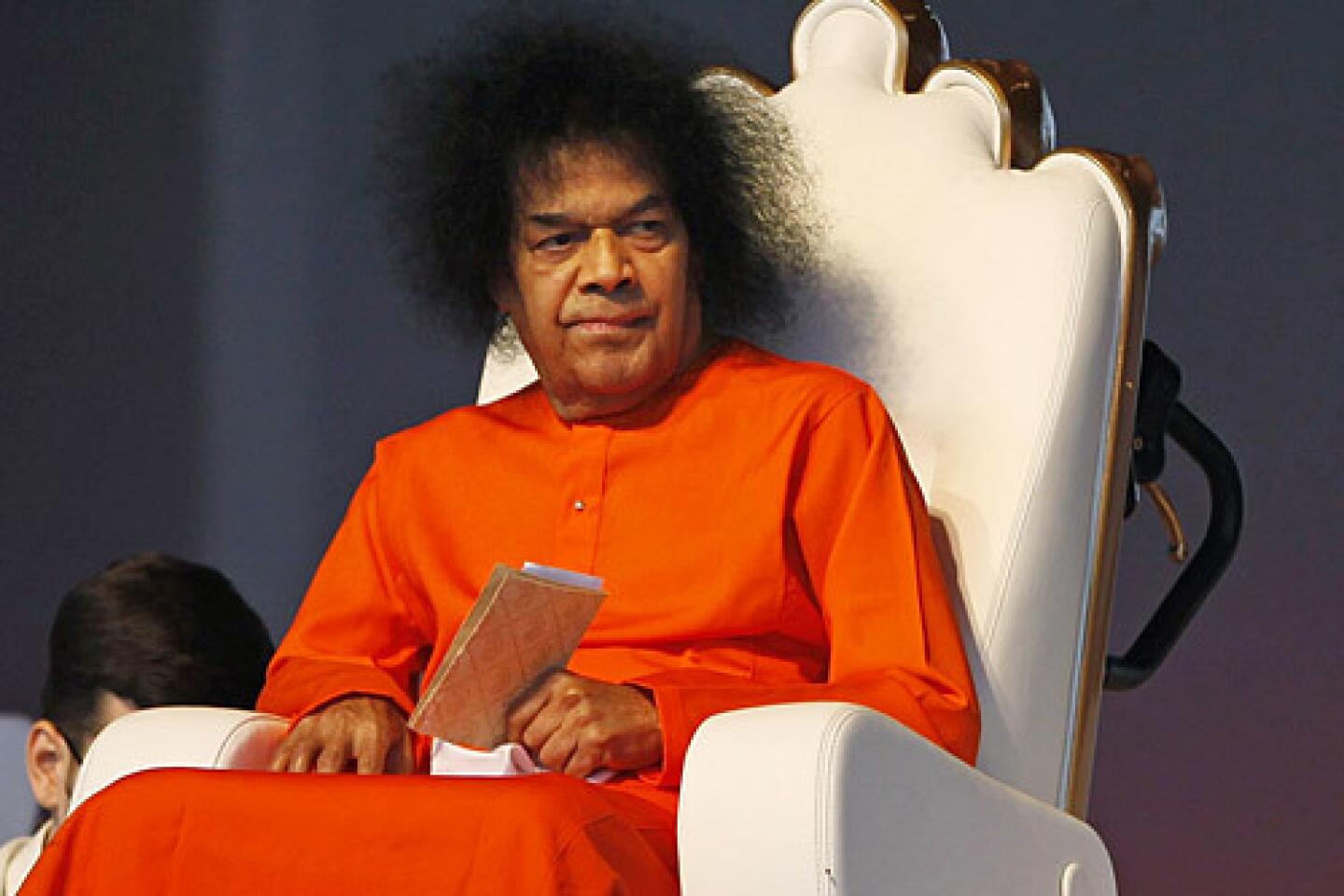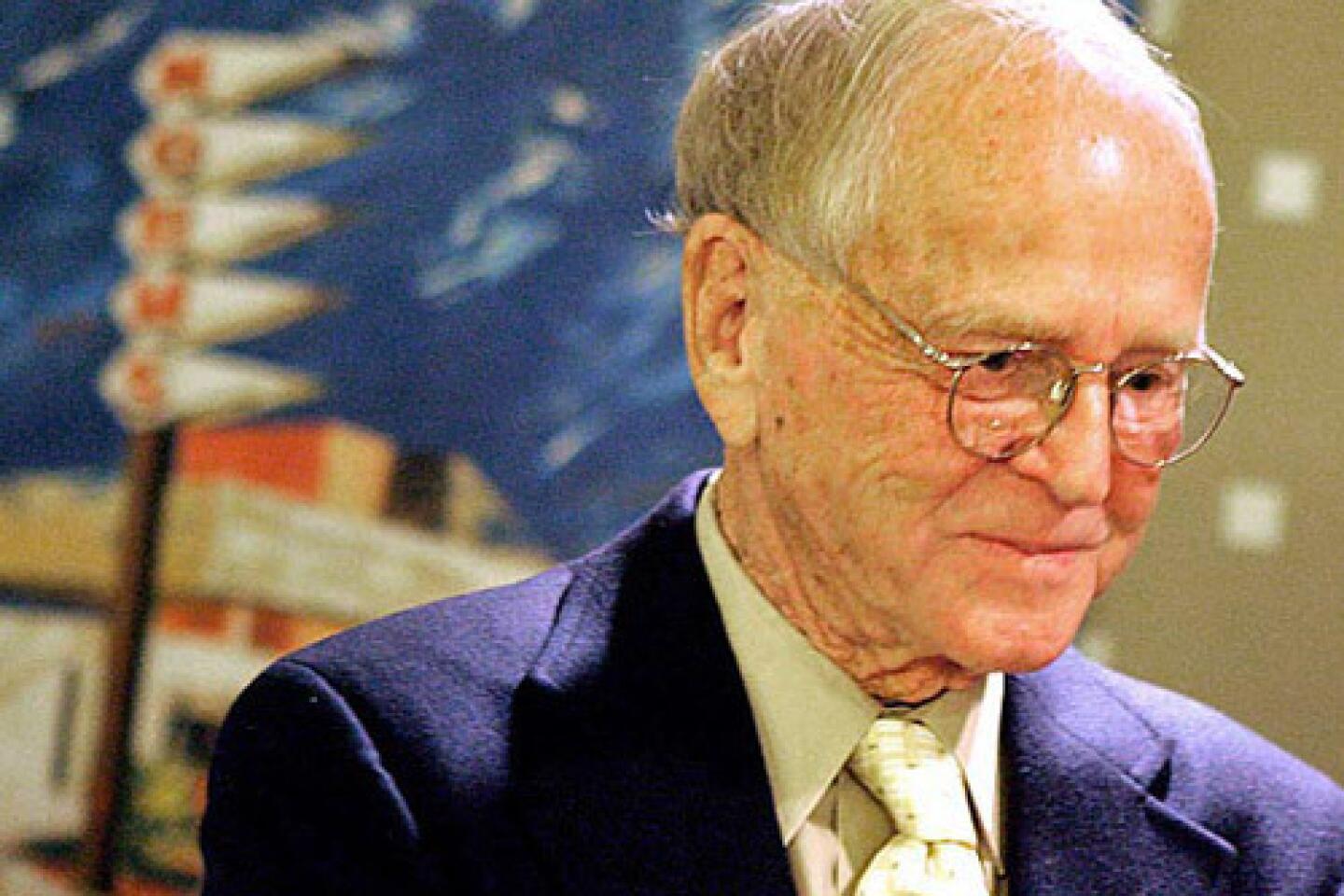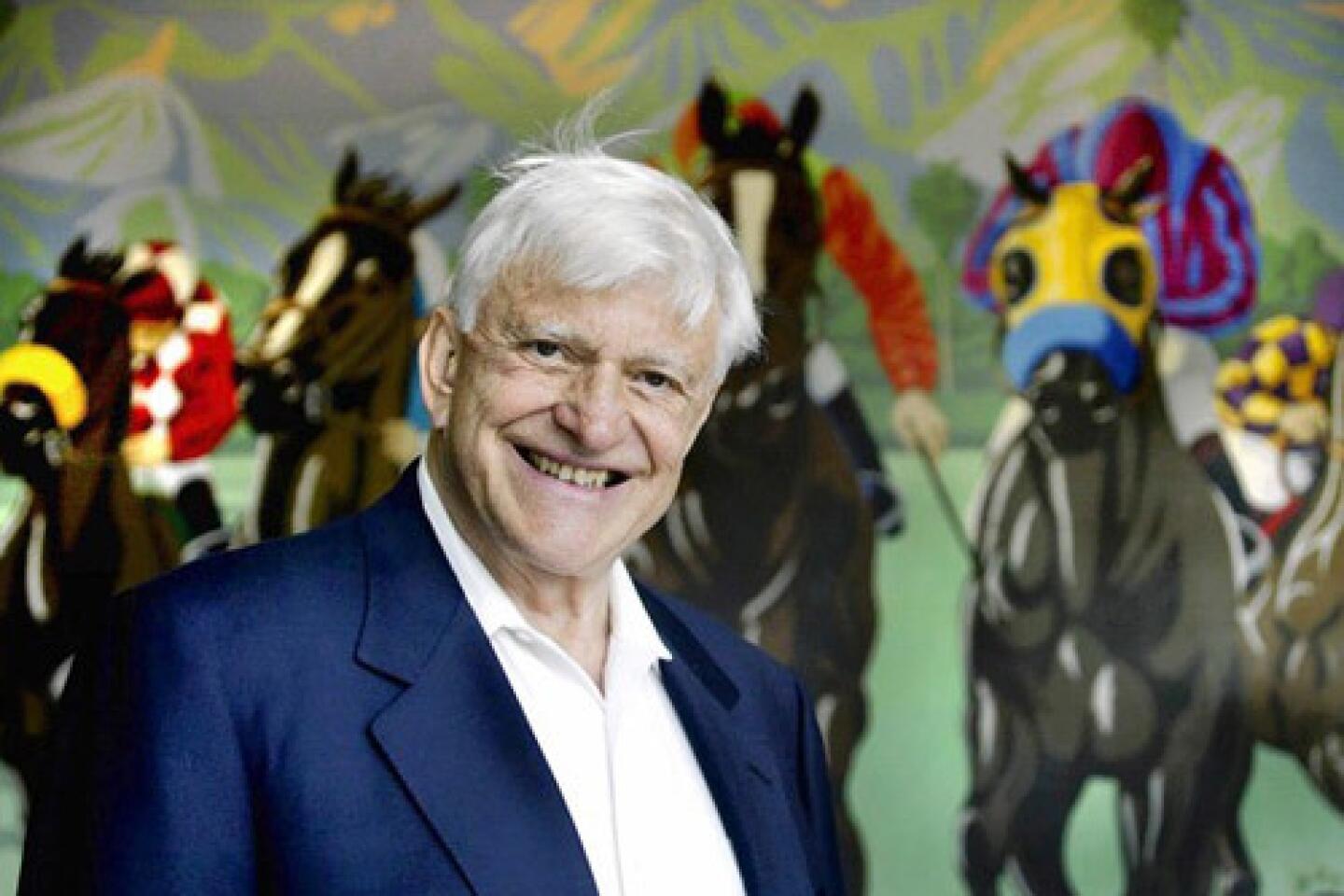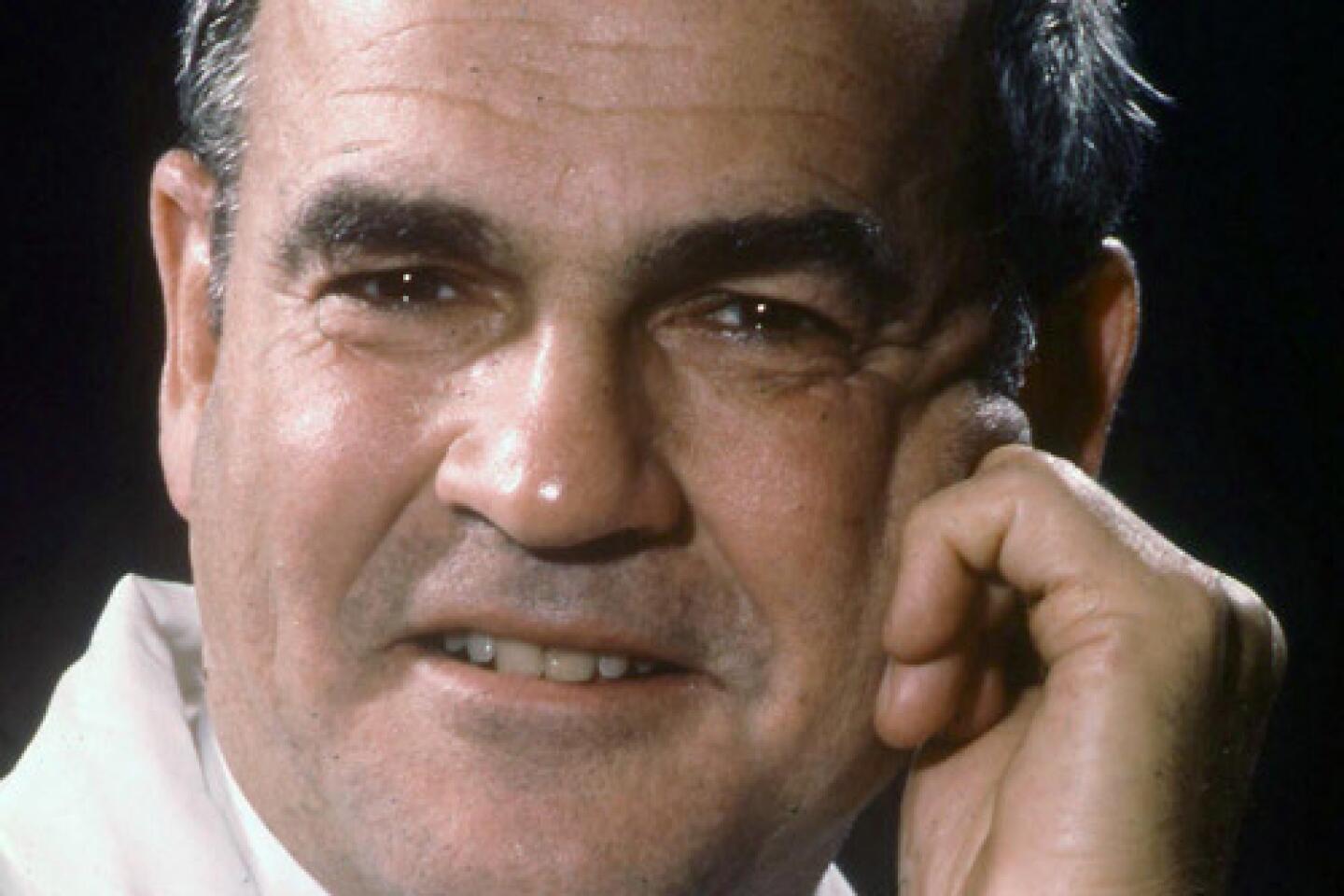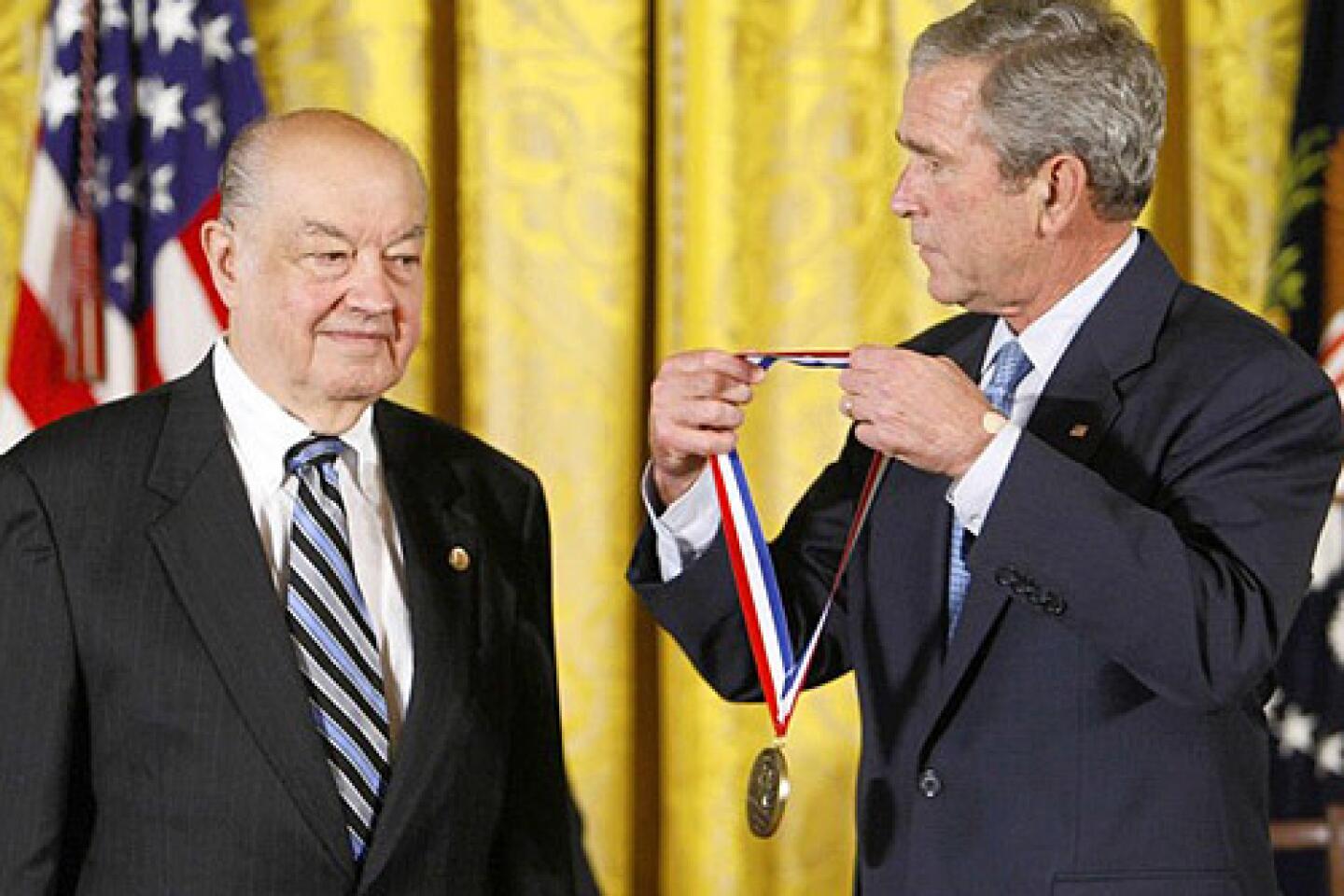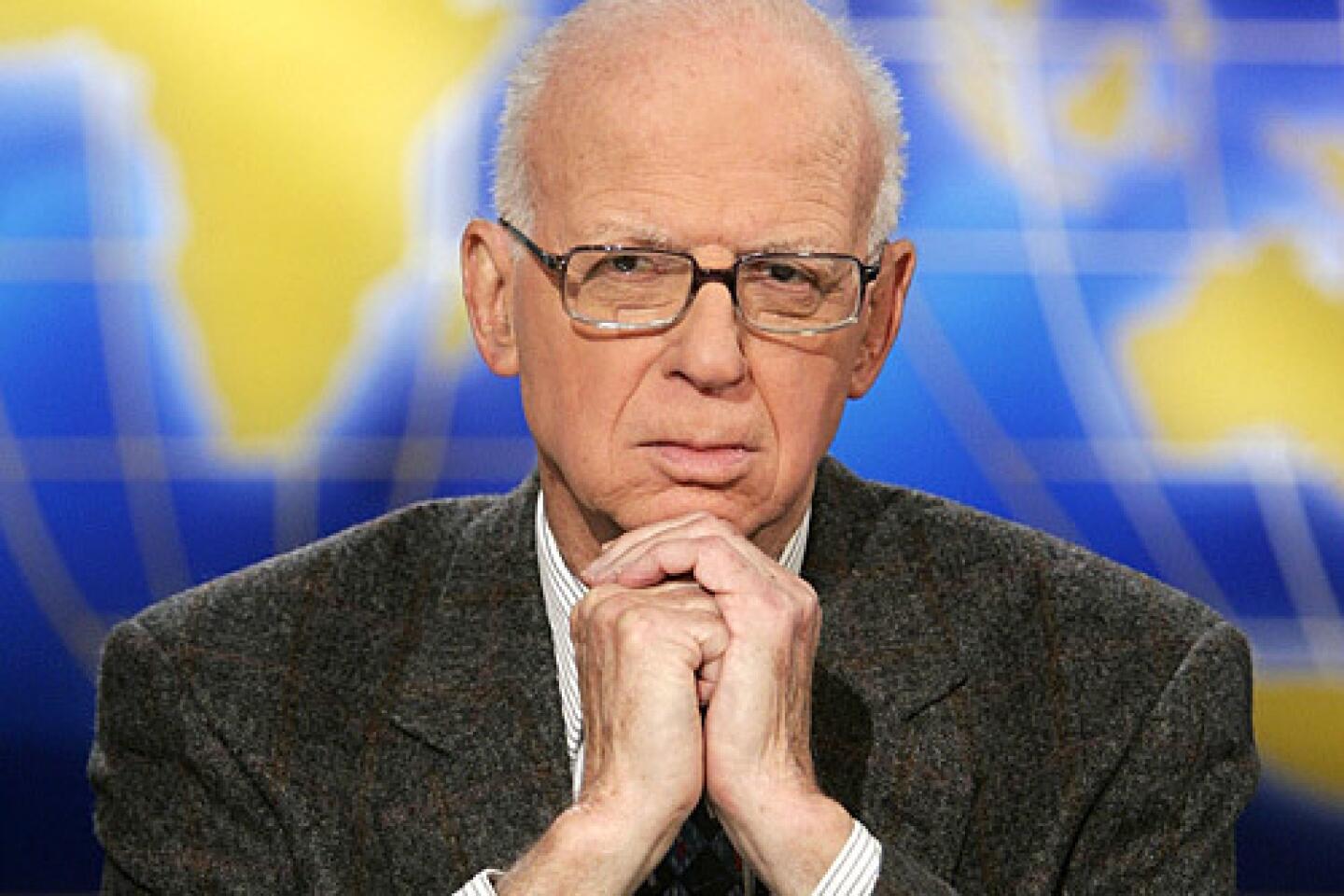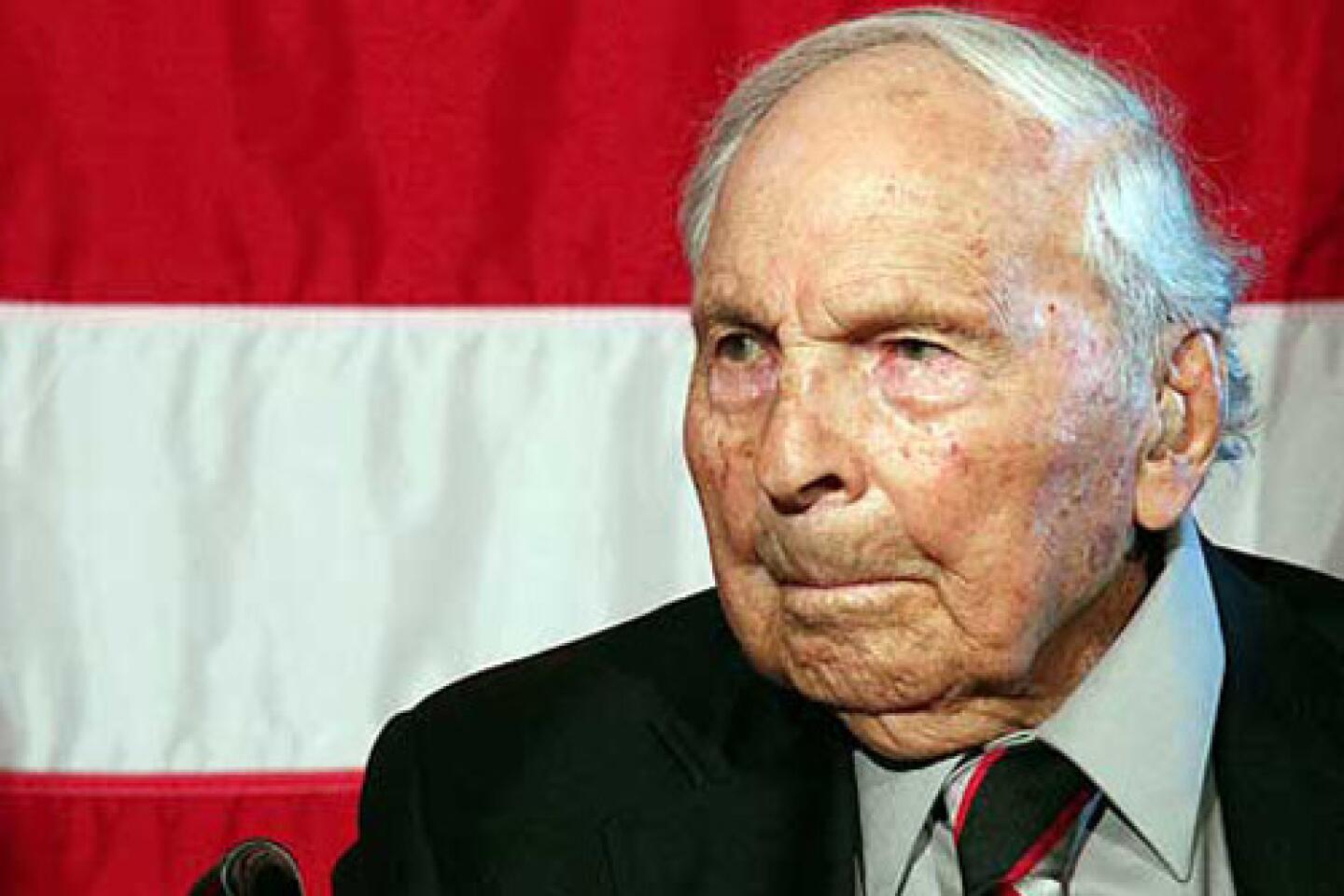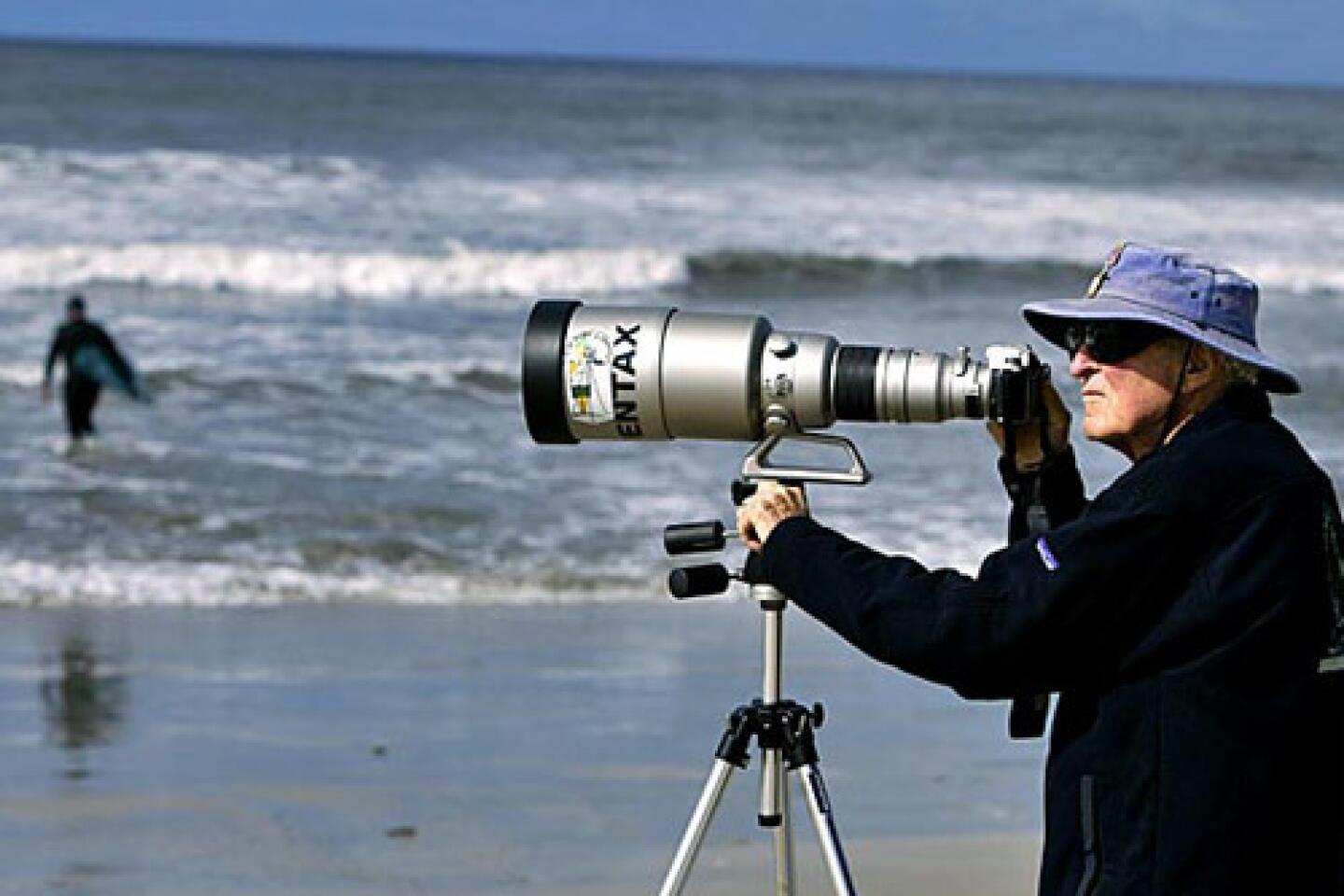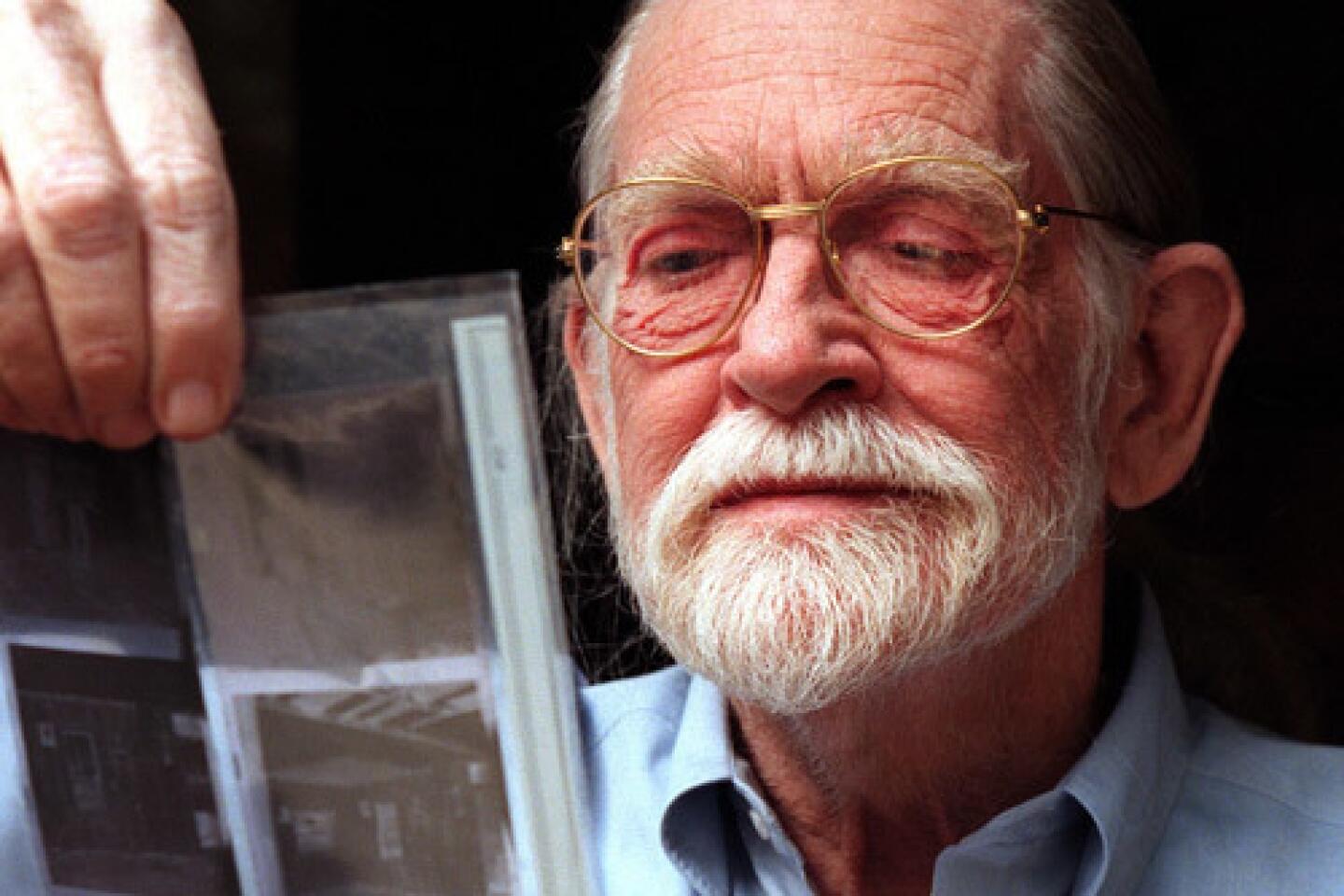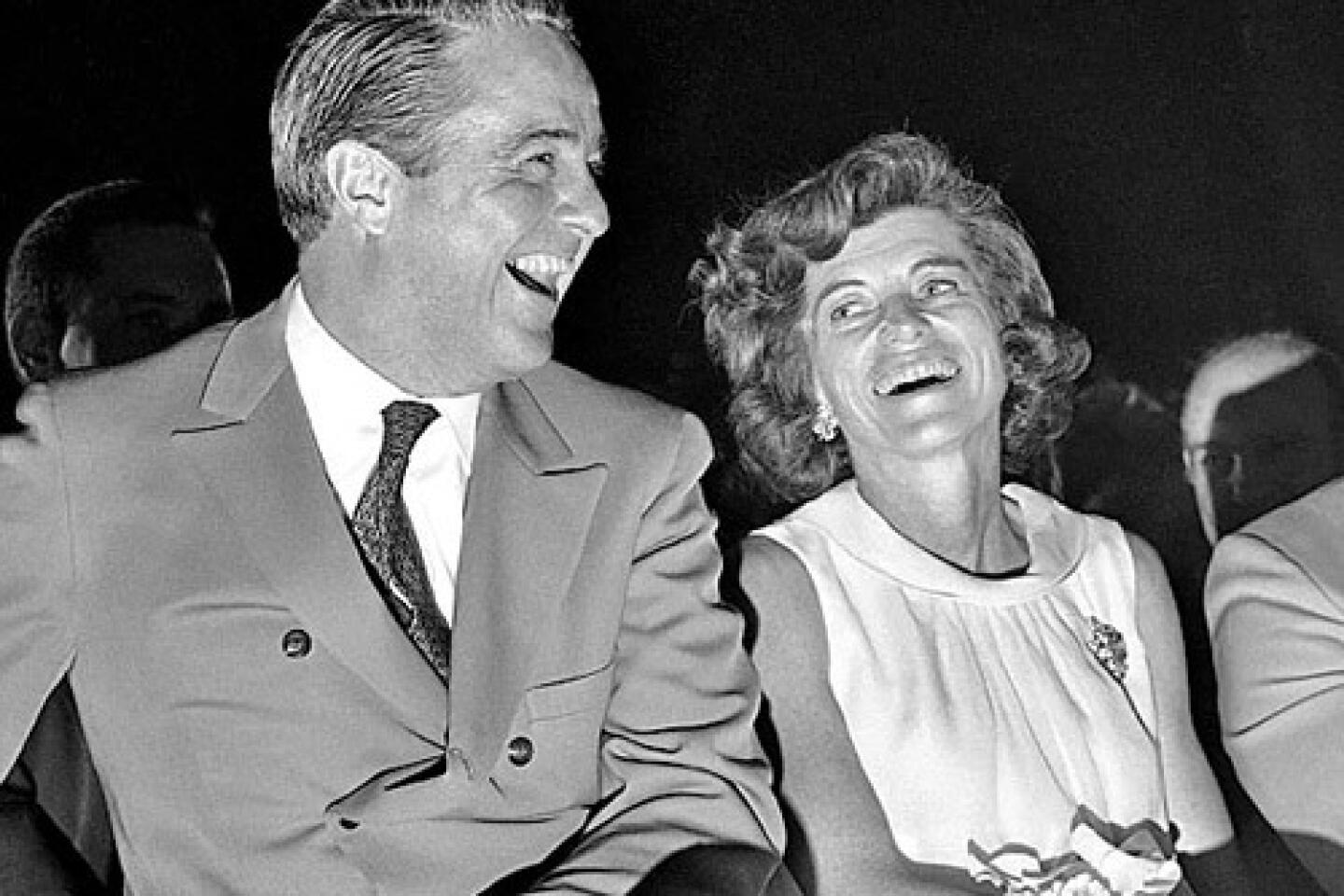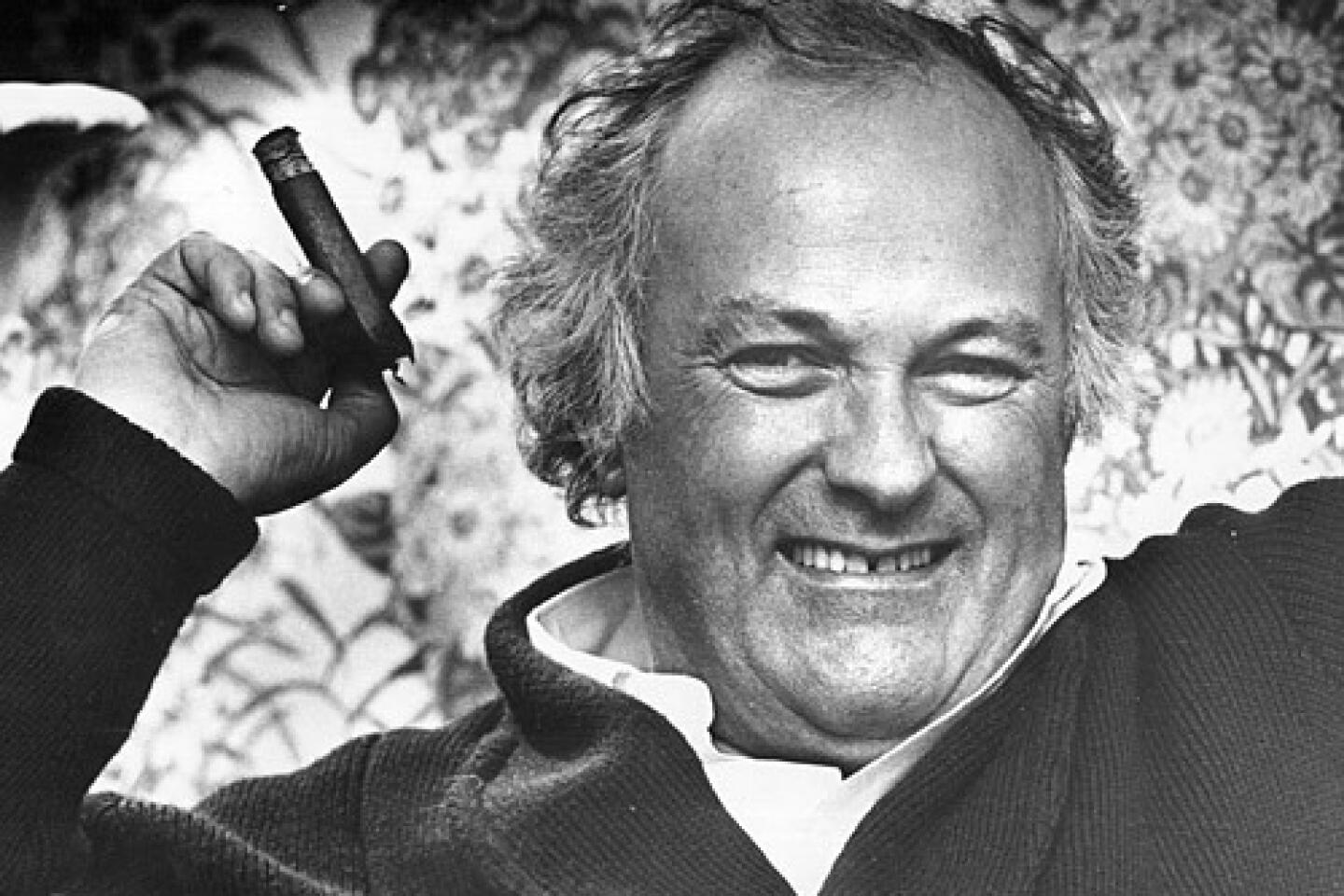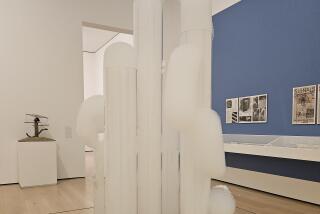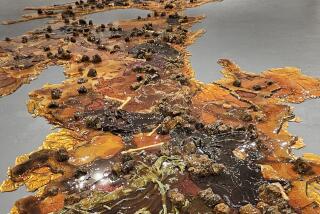John Chamberlain dies at 84; American sculptor
John Chamberlain, a prolific American sculptor whose use of crushed automobile sheet metal became his signature during a career that spanned half a century, died Wednesday in New York City. He was 84.
Reportedly in poor health, he had been working on a retrospective exhibition scheduled to open Feb. 24 at the Solomon R. Guggenheim Museum, his second at the Manhattan institution. The artist’s death was announced by his wife, Prudence Fairweather, although no cause was given.
The artist claimed that his knowledge of art history was scant, but he often made sculptures that acknowledged ancient precedent in up-to-date materials. The welded metal “totems” David Smith made in the 1950s from old boilers, shop tools and other industrial scrap were the most important immediate antecedent to his work, as were the muscular abstract paintings of his friend Franz Kline. The linear space and vivid Expressionist palette of Willem de Kooning also had a profound impact. Yet, piecing together junkyard scraps of twisted automobiles, Chamberlain could create imposing abstract monoliths that displayed the dramatic sweep of Hellenistic Greek carvings or the coiled energy of Italian Baroque tableaux.
Chamberlain’s earliest sculptures were made from welded iron rods. His first sculpture using car parts was 1957’s “Short Stop,” made from the rusty fenders of a 1929 Ford that he found in the Long Island yard of his friend, painter Larry Rivers. With the incorporation of car parts, the linear nature of his earlier sculptures began to assume rounded volume. By 1961, his mature sculptural style was fully formed, the shallow space of “Short Stop” now voluminous.
Color, which hadn’t been a major factor in 20th century sculpture, was also important. It was given by the choice of found materials. Color was also added or subtracted by a studio assistant wielding a spray gun or an industrial sander, or else it was embellished by Chamberlain using cans of spray paint in graffiti-like drawing.
John Angus Chamberlain was born April 16, 1927, in Rochester, Ind., the son of a saloonkeeper. His parents divorced when he was 4. After Navy service in World War II, he returned to Chicago, where he had grown up in the home of his maternal grandmother, and he used the GI Bill to study hairdressing.
Chamberlain also enrolled at the School of the Art Institute of Chicago, where he became enthralled with the exceptional collection of paintings by Vincent van Gogh. Among them are vibrant canvases composed of interlocking color shapes, such as “Madame Roulin Rocking the Cradle” and “The Bedroom.” He was also taken with De Kooning’s large painting “Excavation” (1950), in which fragmented, sliding planes are held in precise visual tension across the entire surface, and Alberto Giacometti’s tall, thin, attenuated bronzes of walking figures. Both would inform Chamberlain’s later compositions.
Restless, he left school after 18 months. Chamberlain eventually landed at Black Mountain College in rural North Carolina, where his primary influences were literary.
He gravitated toward a Modernist theory free from traditional narrative and dependent on concrete imagery and structural compression, as evident in the writings of his teachers, Robert Duncan, Robert Creeley and Charles Olson. Those influences would turn up in his sculpture, where piecing together existing forms and holding them in place, physically and visually, became the primary sculptural process.
Automobiles are a loaded subject, especially in the decades following World War II in the United States, which has led some observers to ascribe specific social meanings to Chamberlain’s art. The crushed automobiles have been connected to the violent death of Abstract Expressionist painter Jackson Pollock, who wrapped his car around a tree in 1956, and then to the slightly later, 1960s car-crash paintings of Pop artist Andy Warhol. Chamberlain was skeptical. Of his choice of automobile sheet metal, the artist once said, “Michelangelo had a lot of marble in his backyard, so to speak; I had a lot of this stuff.”
Using a common material is best for sculpture, he added, because it “doesn’t get in the way of doing an uncommon thing.”
Painted sheet metal was not the only material Chamberlain employed. A large 1986 retrospective at the Museum of Contemporary Art in Los Angeles included sculptures made from Plexiglas, paper, foam rubber and aluminum foil, as well as collages, drawings and paintings.
Chamberlain spent considerable time in Los Angeles, especially in the late 1960s and early 1970s, where several of the foam-rubber sculptures were made. In the 1980s, he moved his studio to Sarasota, Fla., and most recently he was working in Shelter Island, N.Y. His sculpture is in the permanent collections of many museums internationally, including MOCA; the Los Angeles County Museum of Art; the Chinati Foundation in Marfa, Texas; New York’s Museum of Modern Art; and Tate Modern in London.
Chamberlain was married four times; two marriages ended in divorce. His wife Elaine died in 1973, and their son Jesse died in 1999. He is survived by their children Angus and Duncan, as well as by Prudence Fairweather and her daughters, Alexandra and Phoebe.
More to Read
Start your day right
Sign up for Essential California for the L.A. Times biggest news, features and recommendations in your inbox six days a week.
You may occasionally receive promotional content from the Los Angeles Times.
